
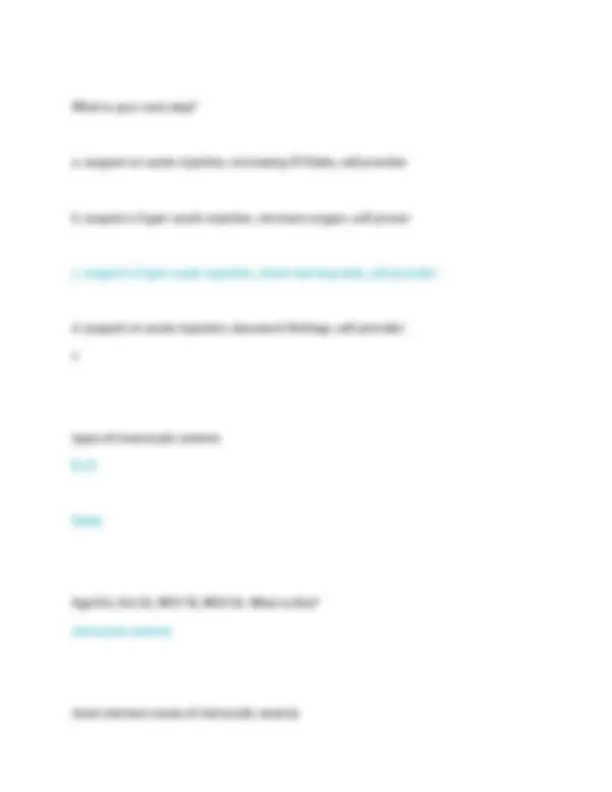
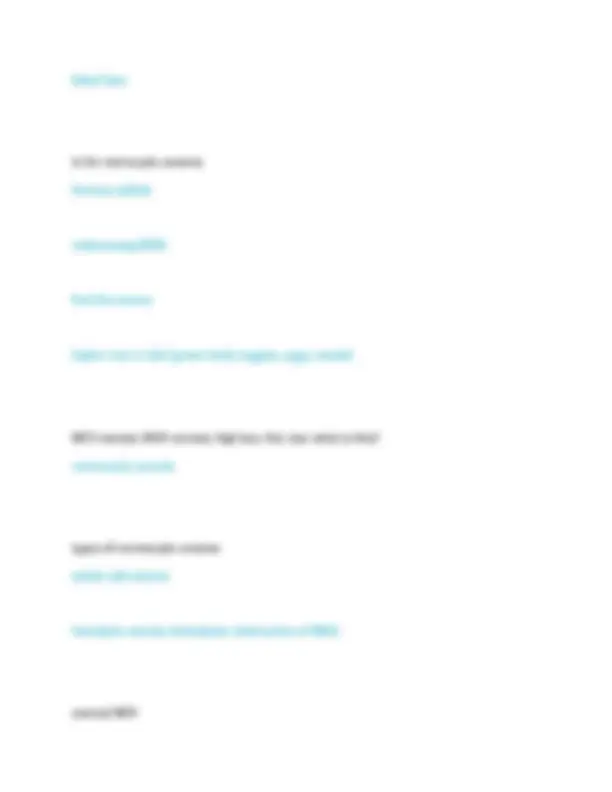

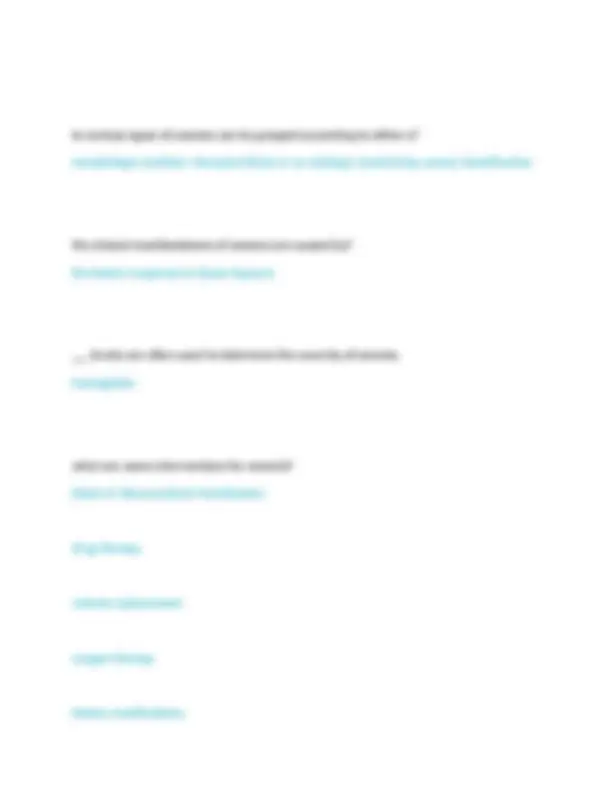
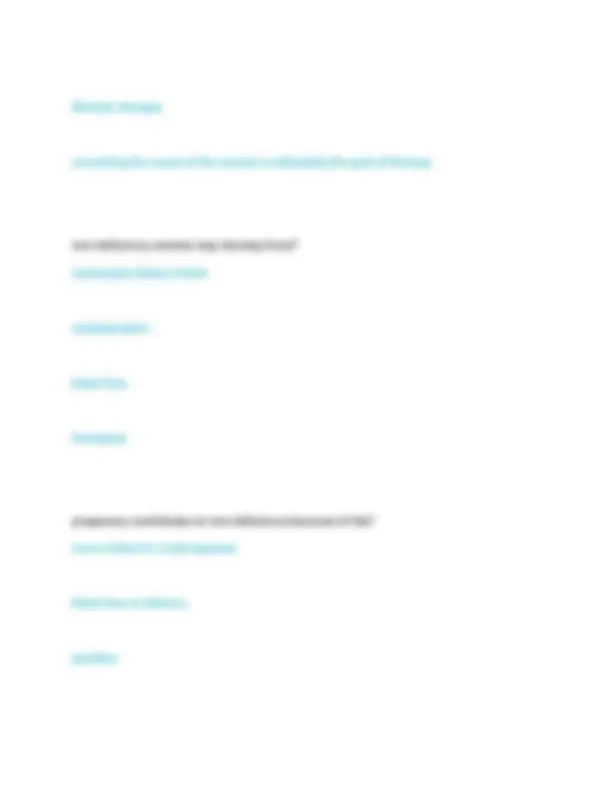
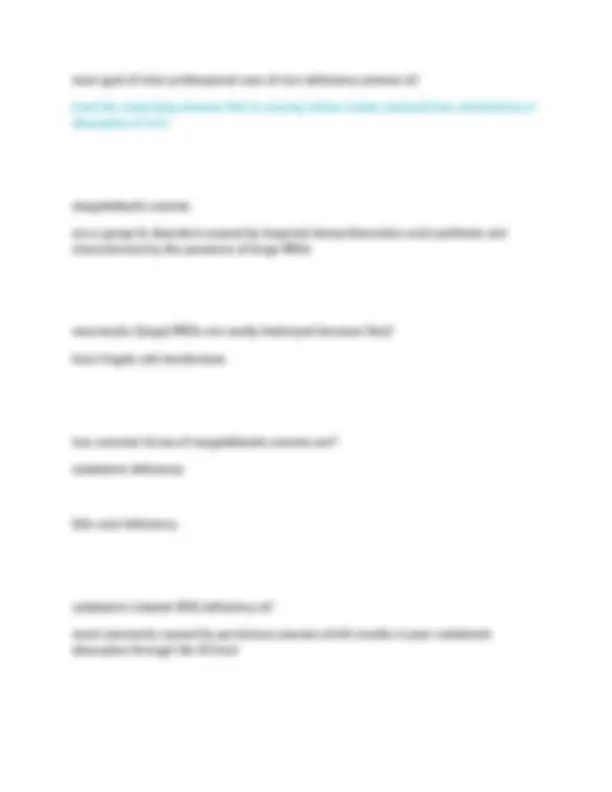
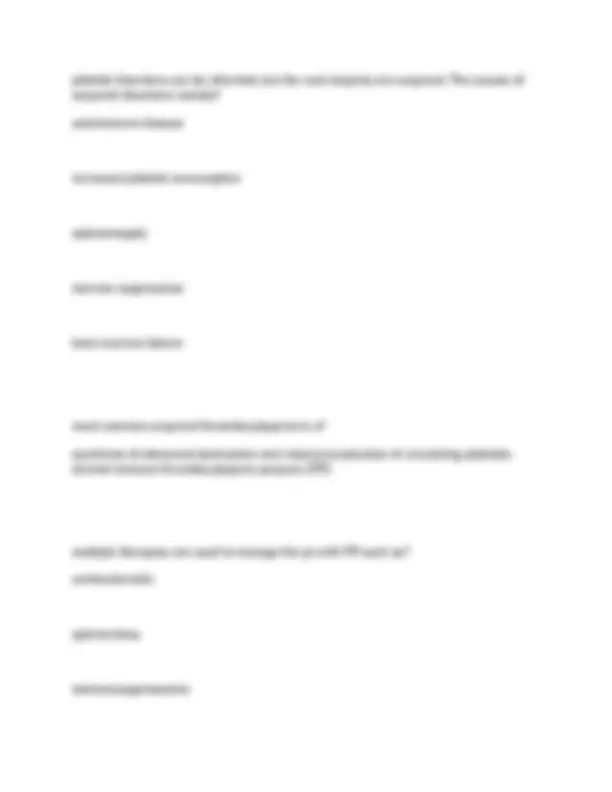
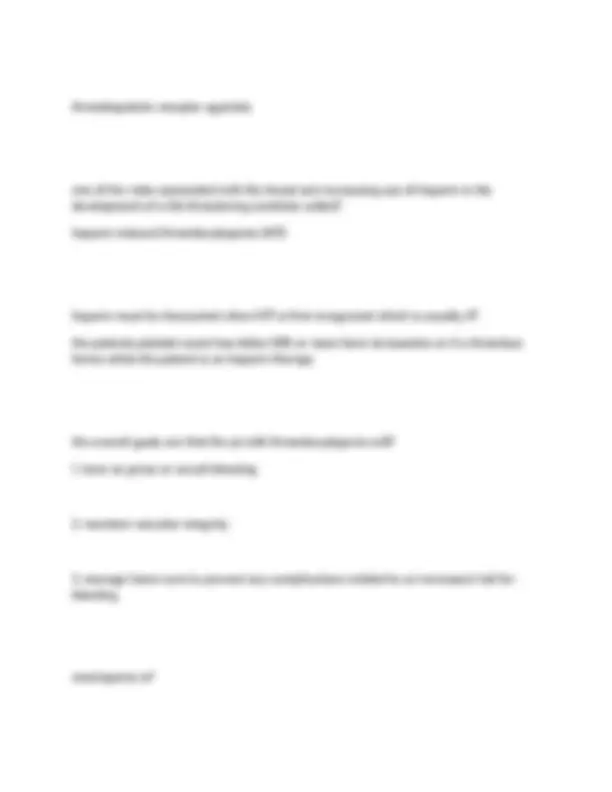
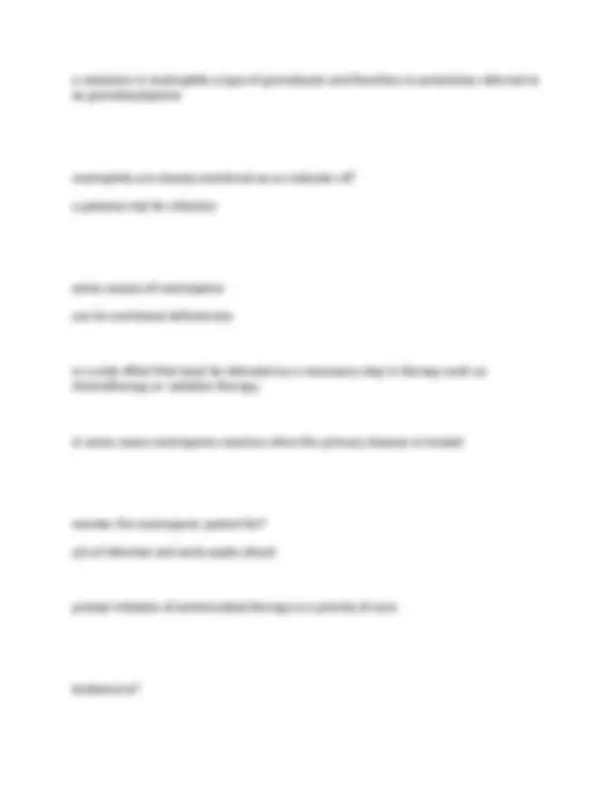
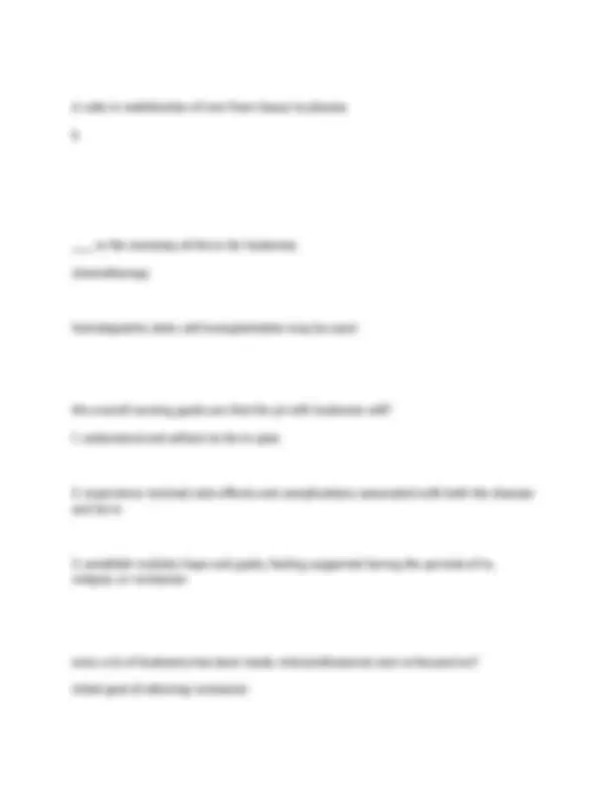

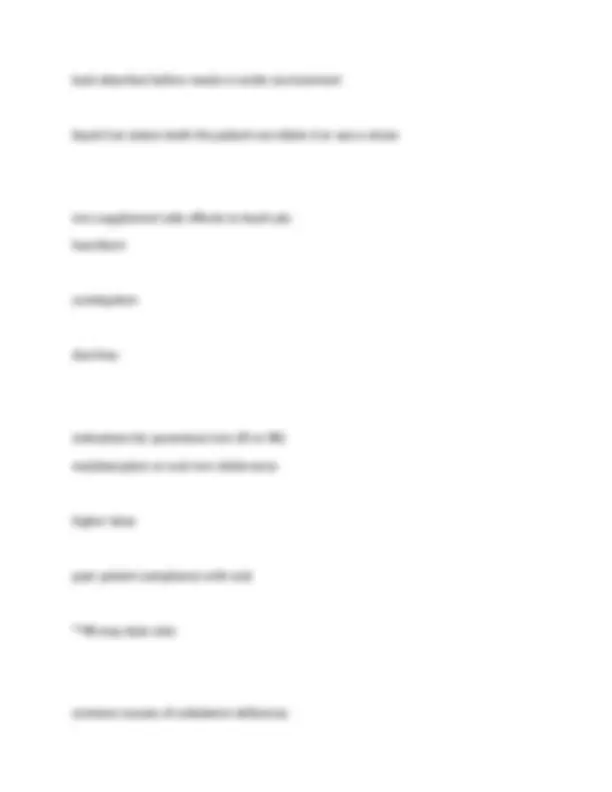
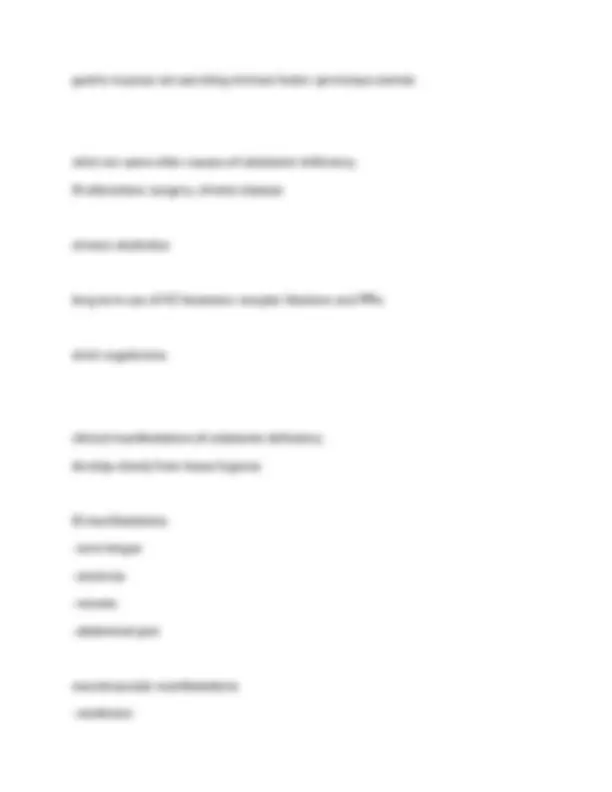
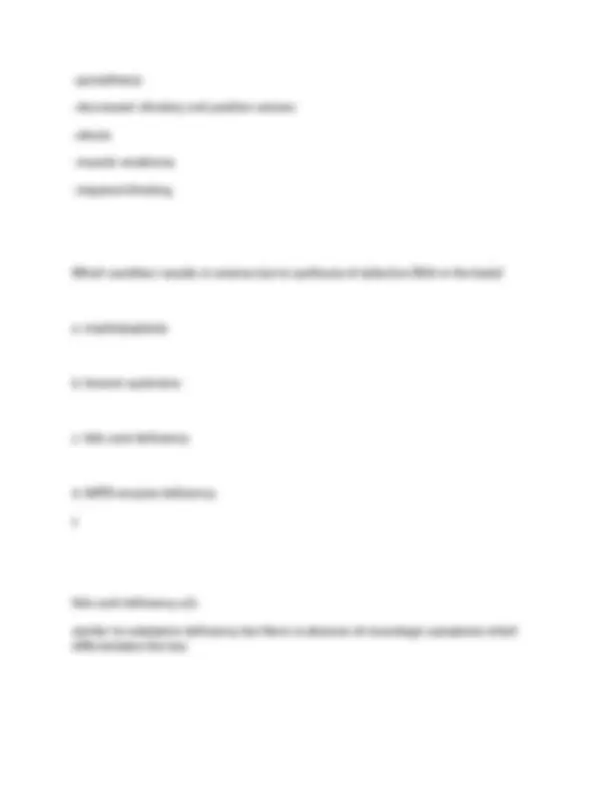
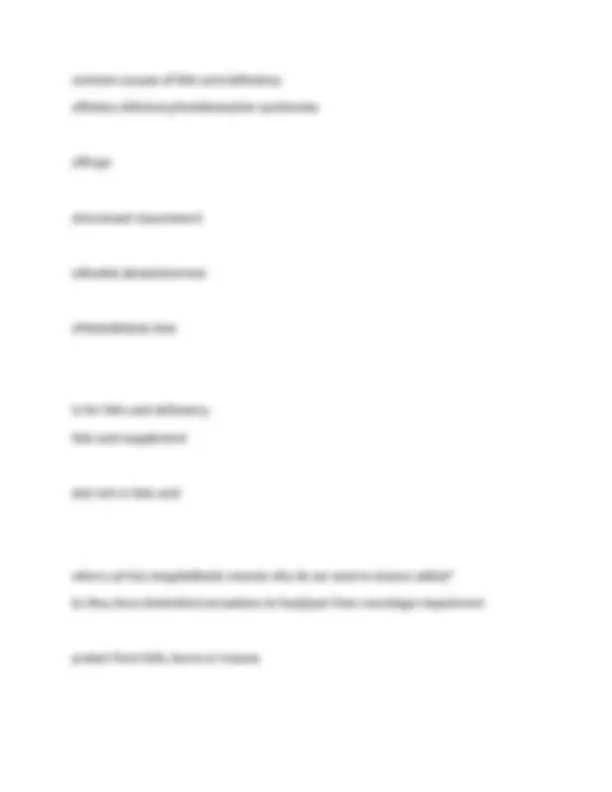
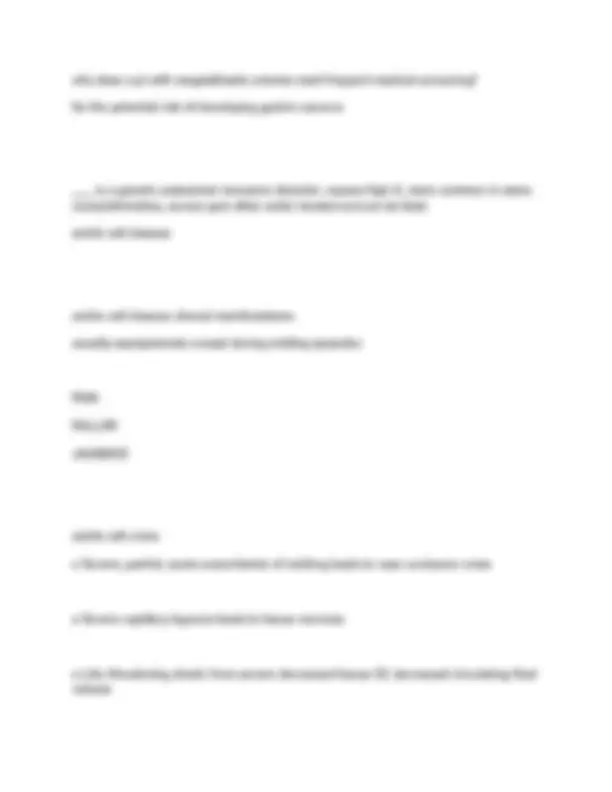
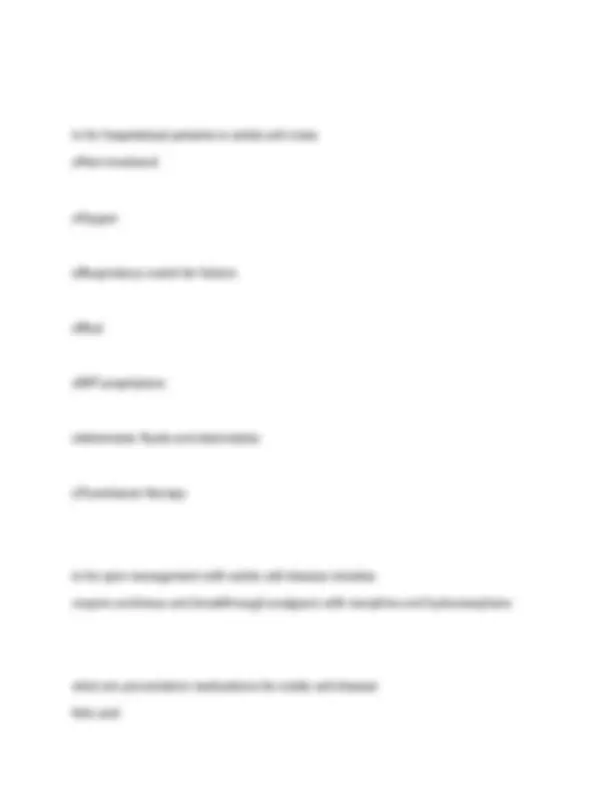
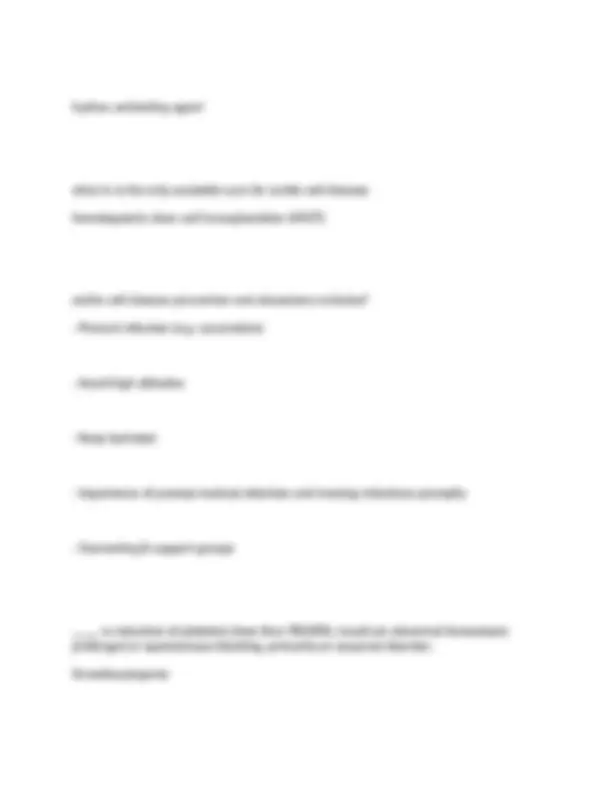
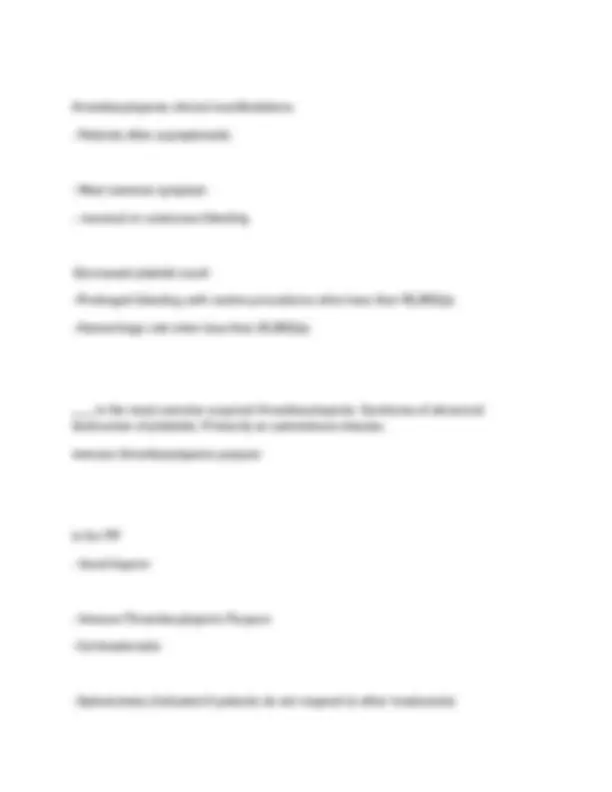
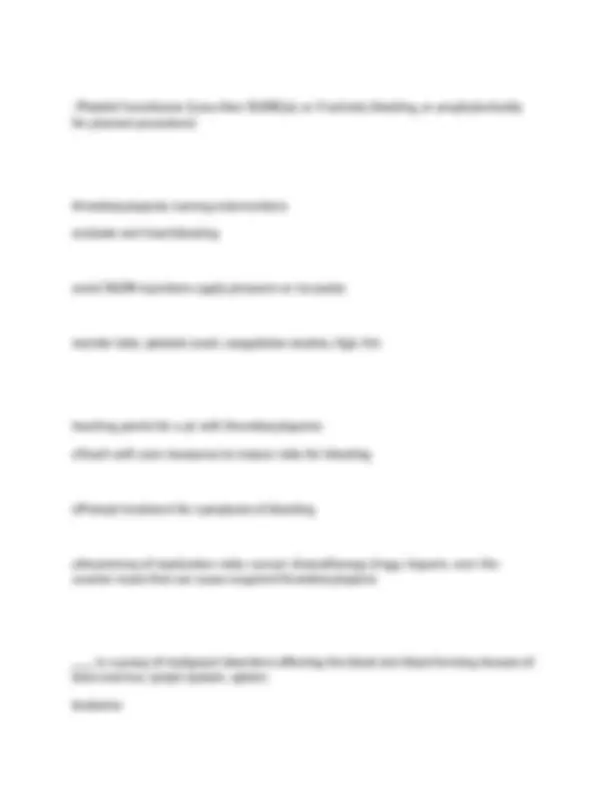
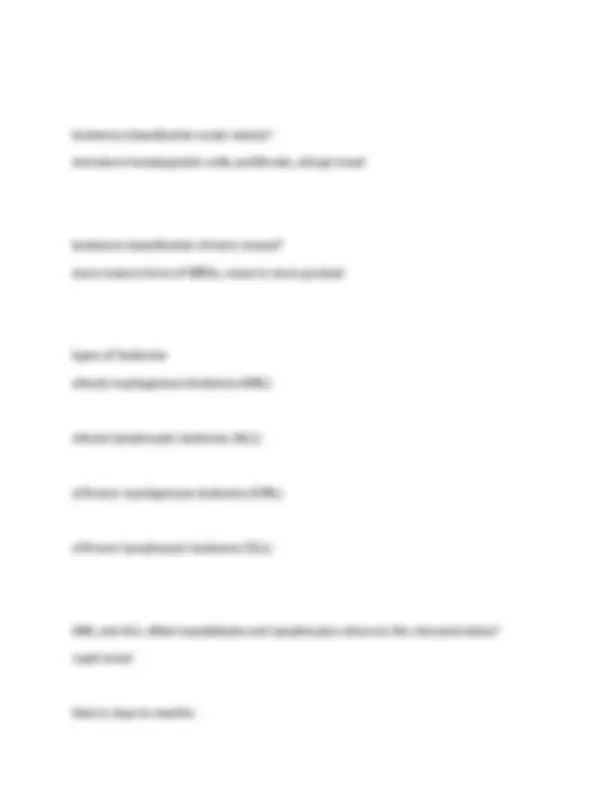
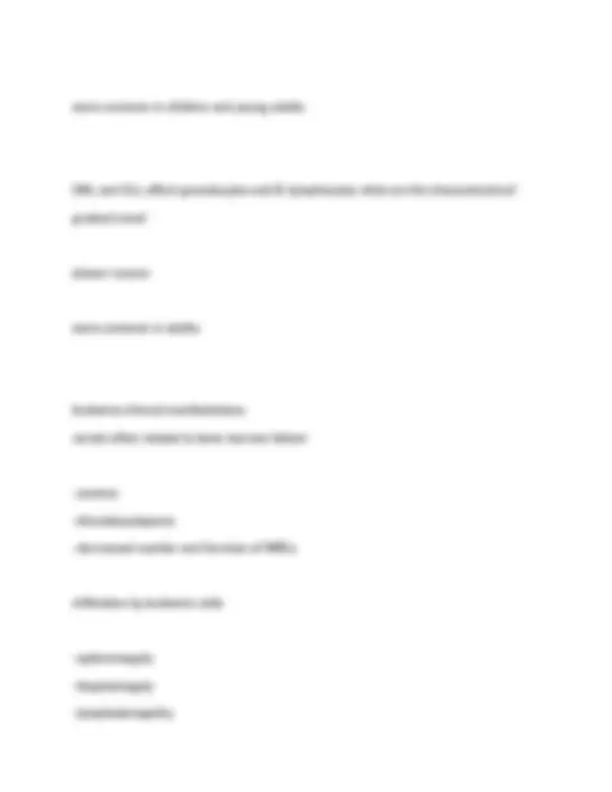
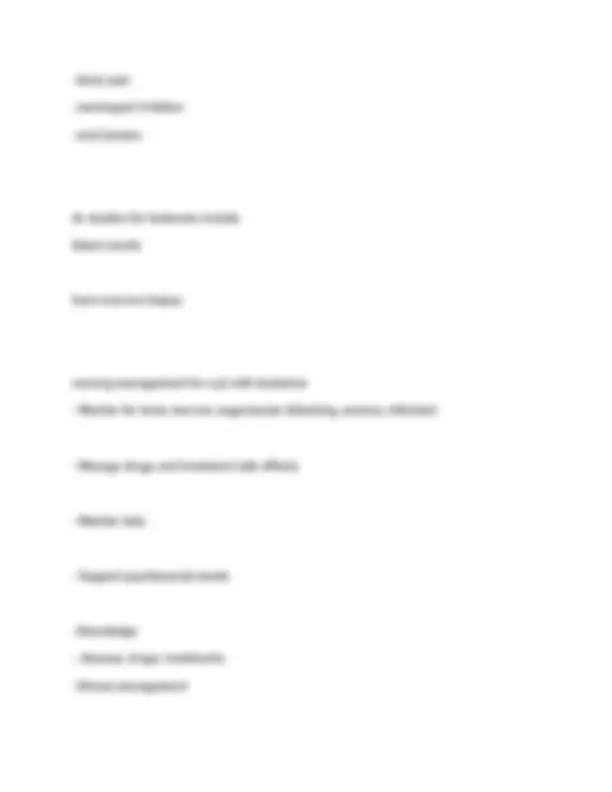
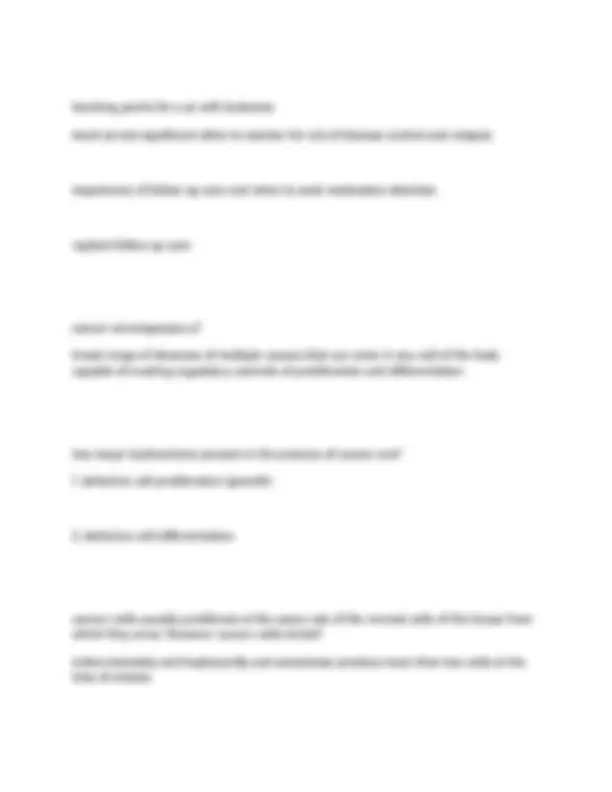
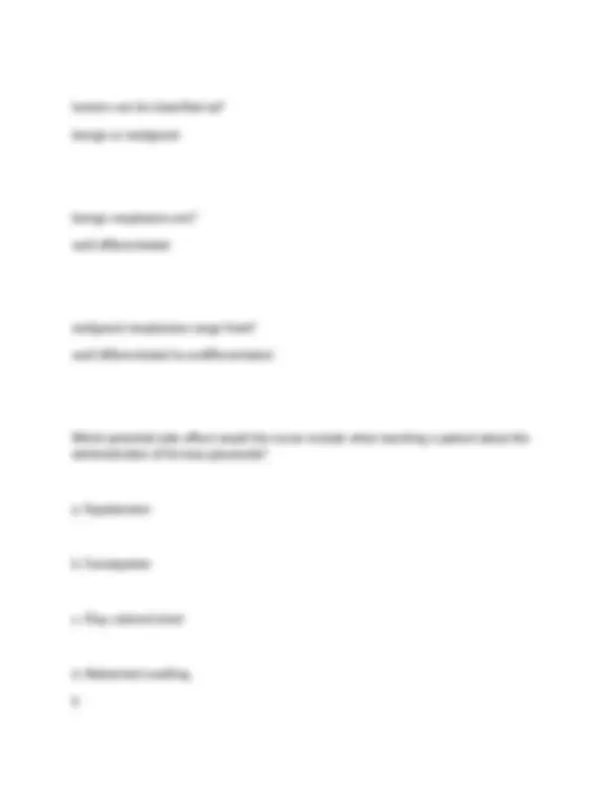
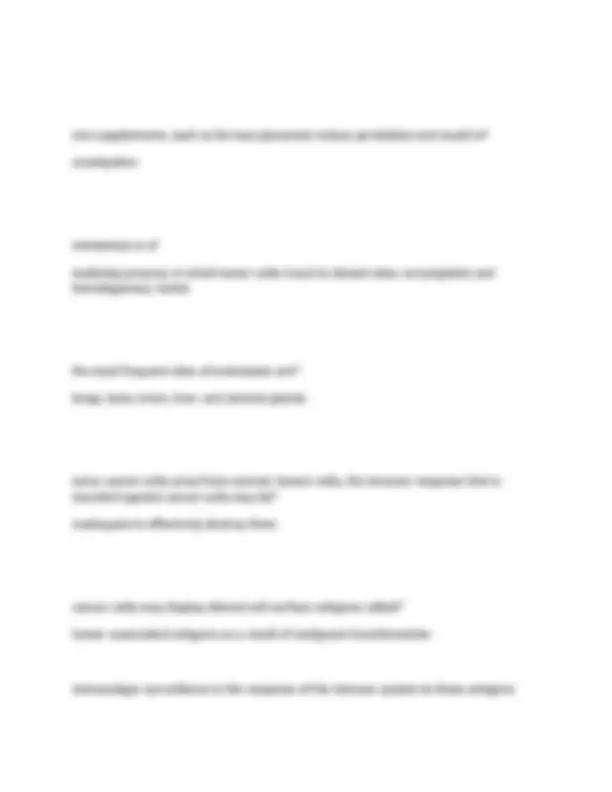
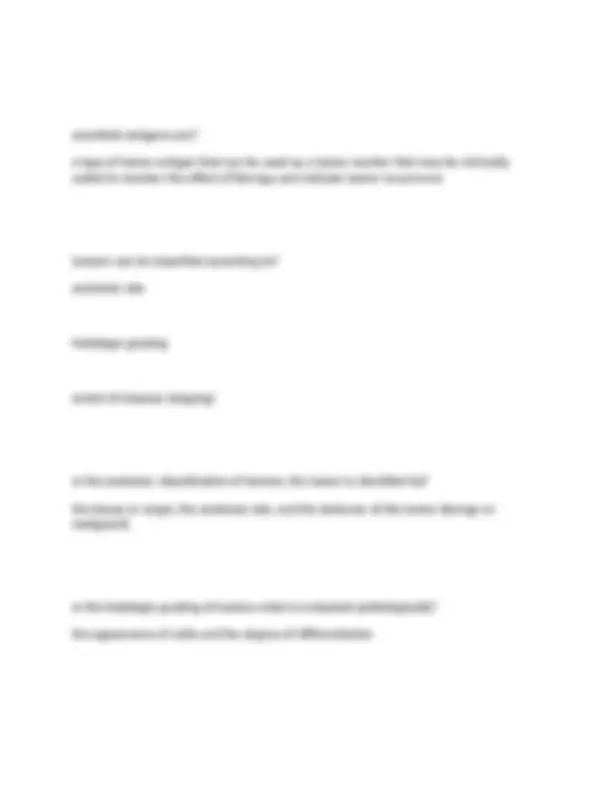

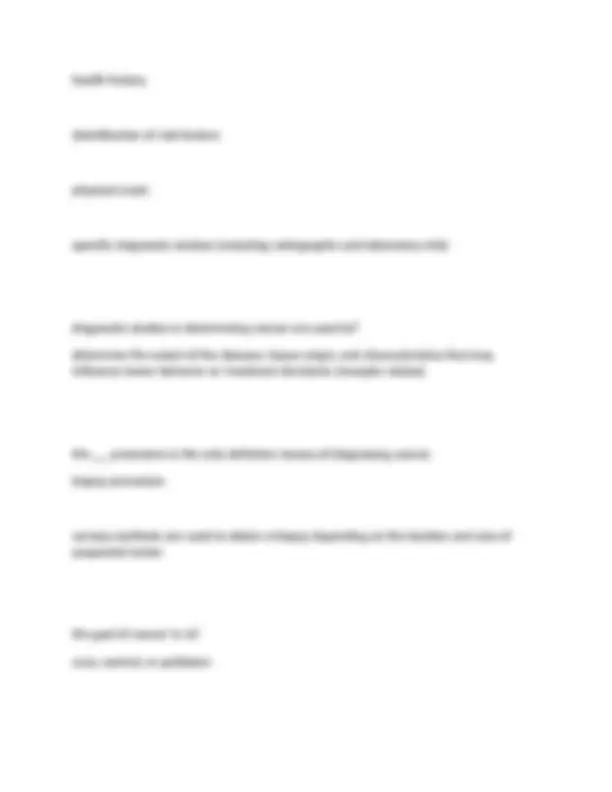
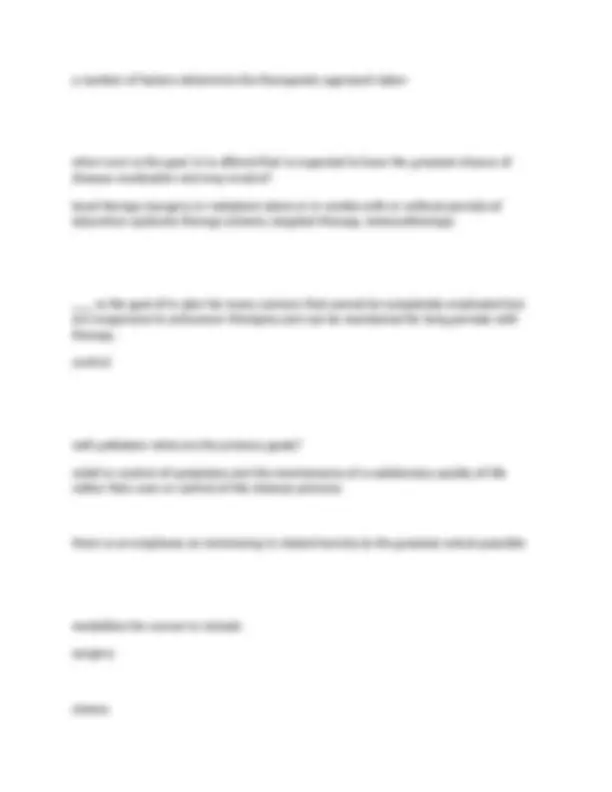
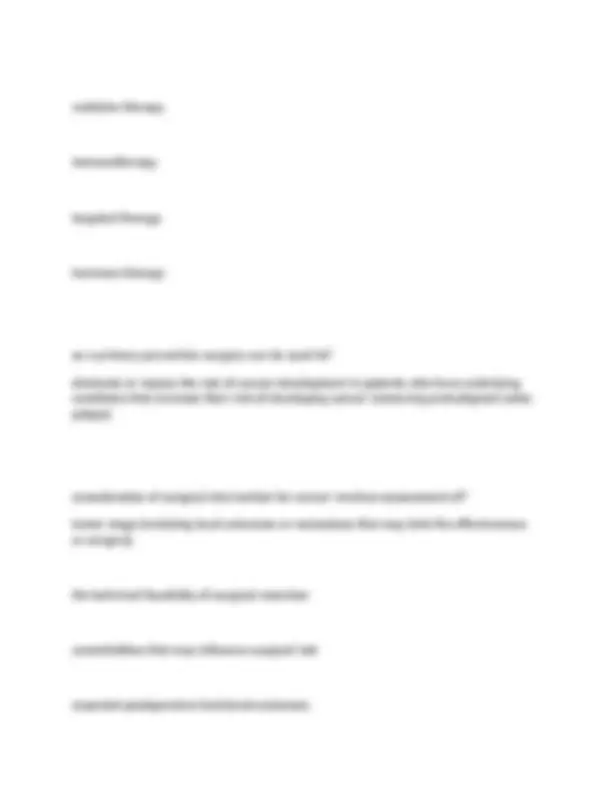
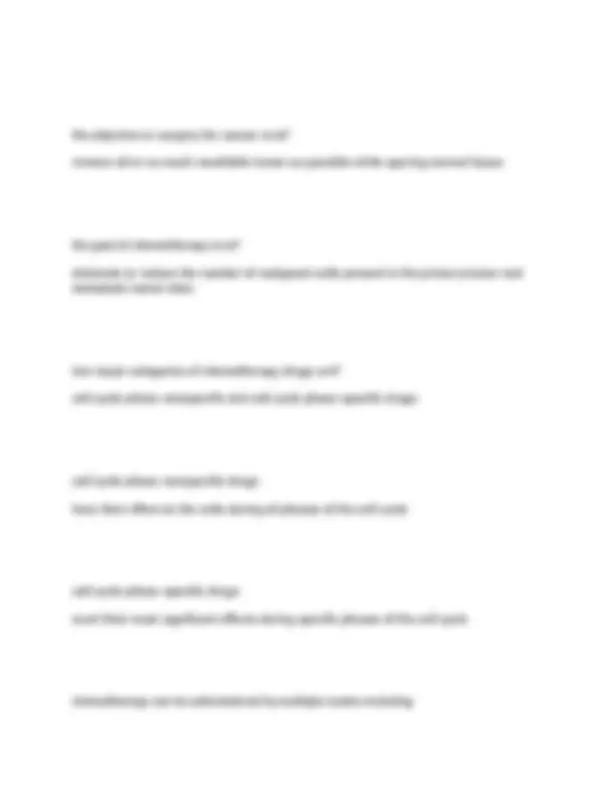
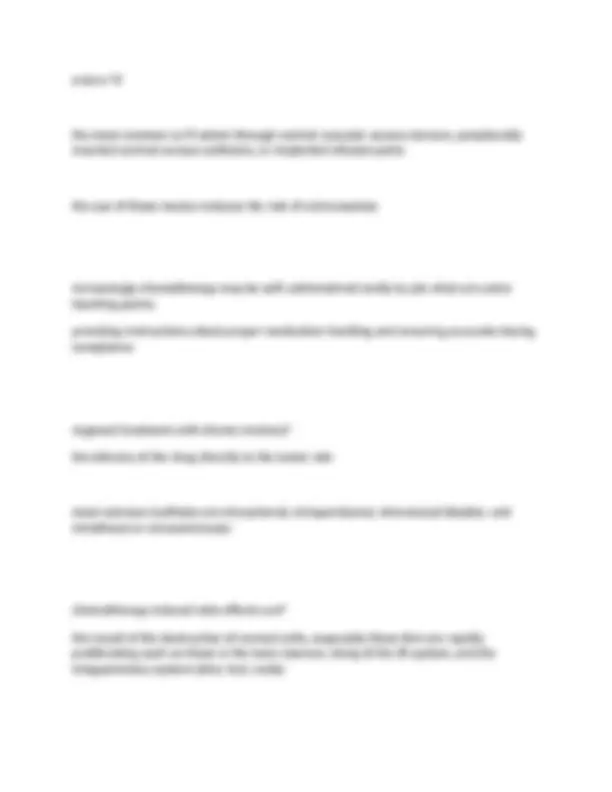
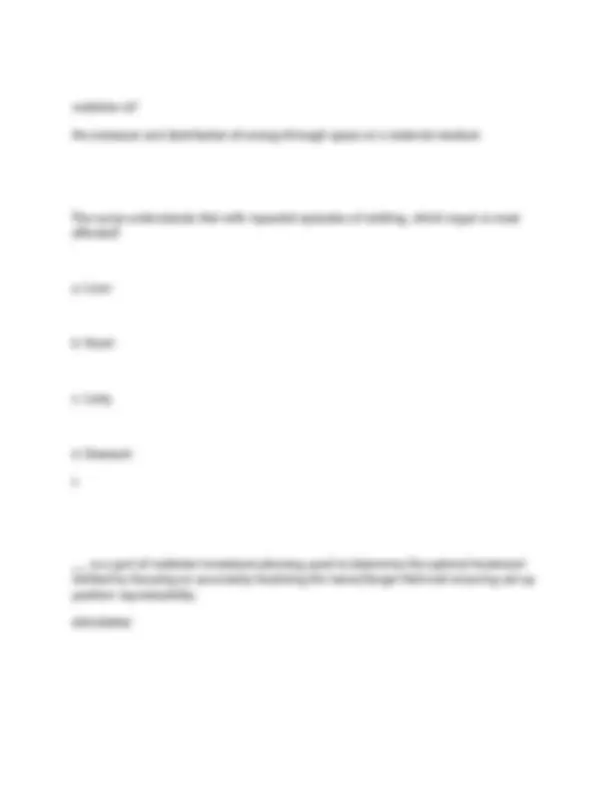
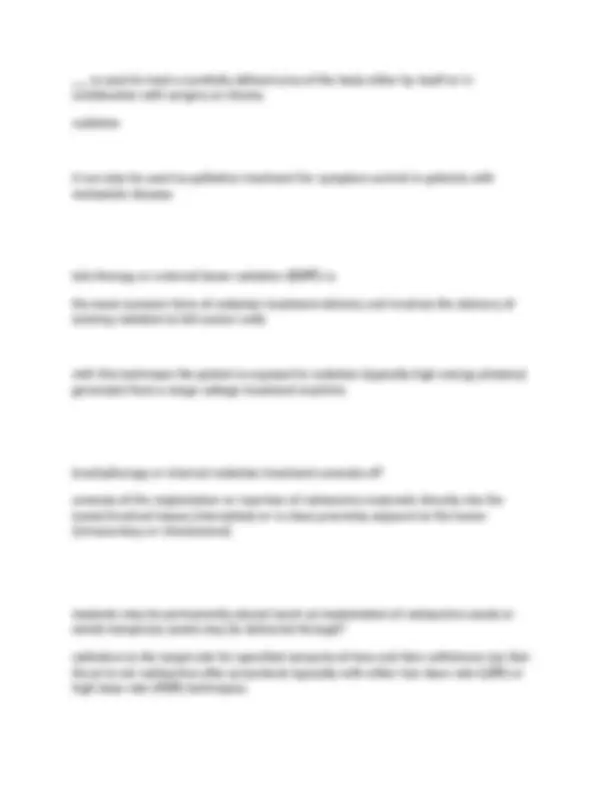
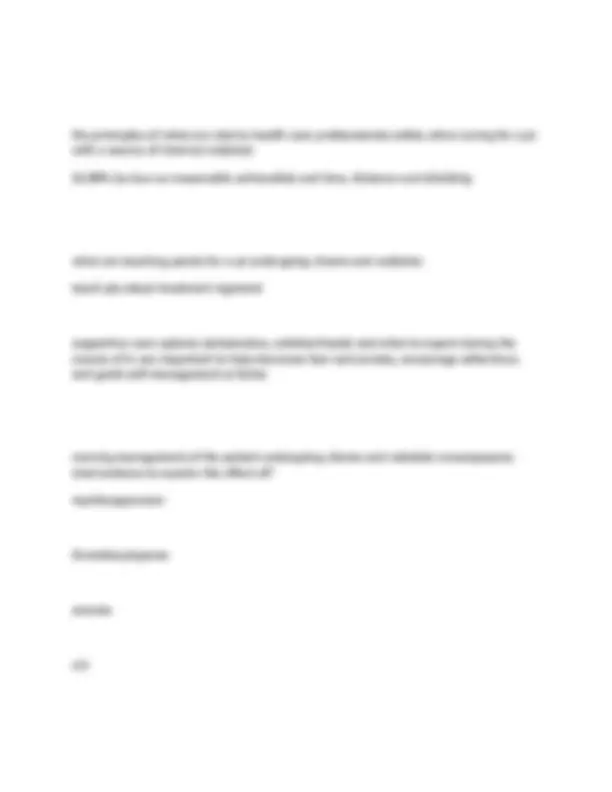
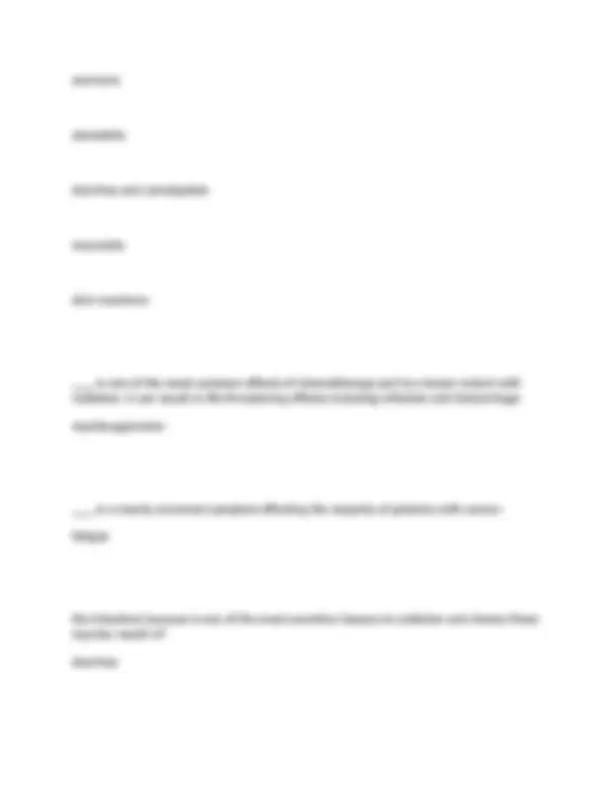
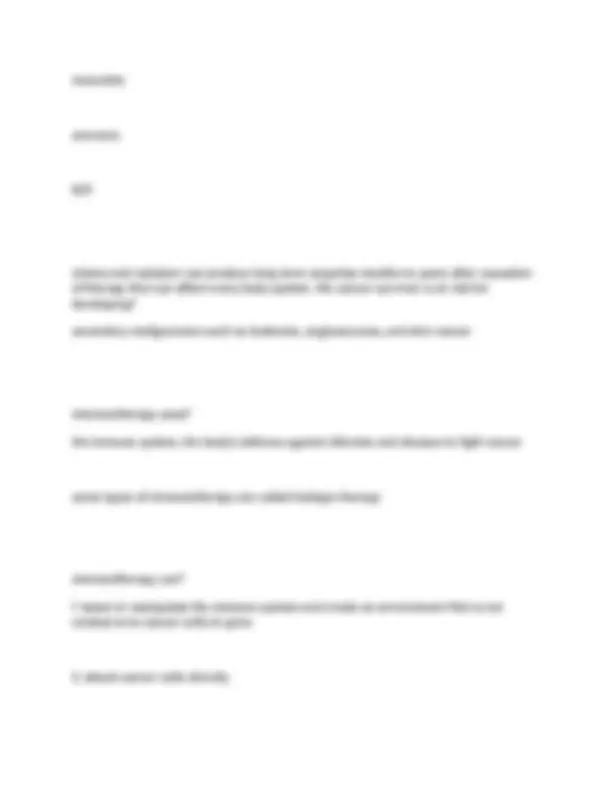
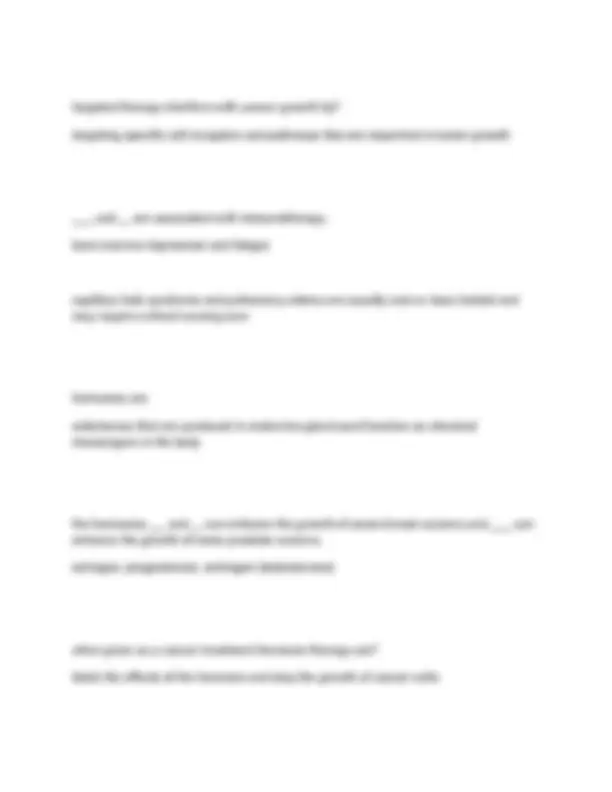
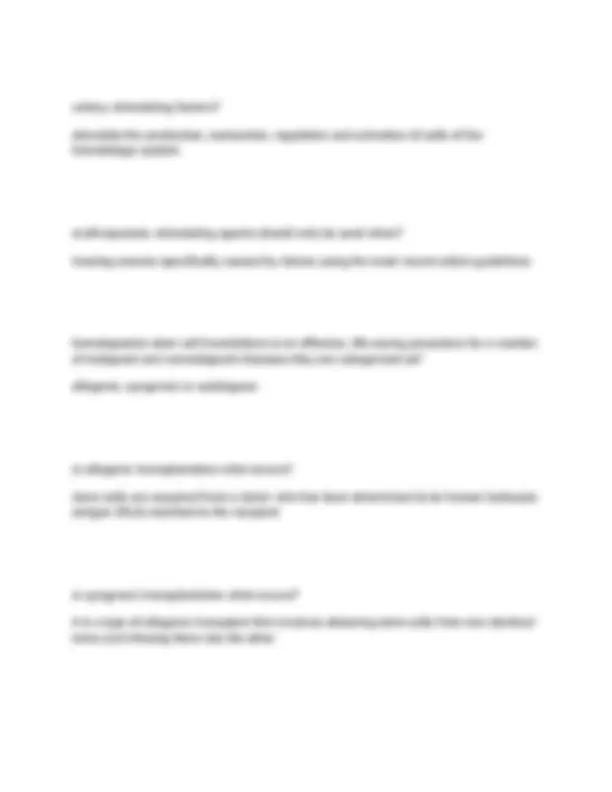
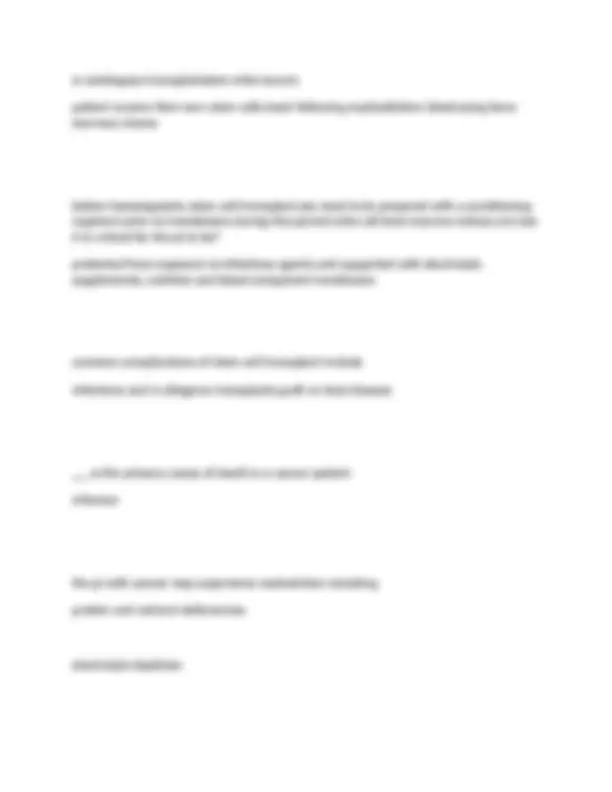
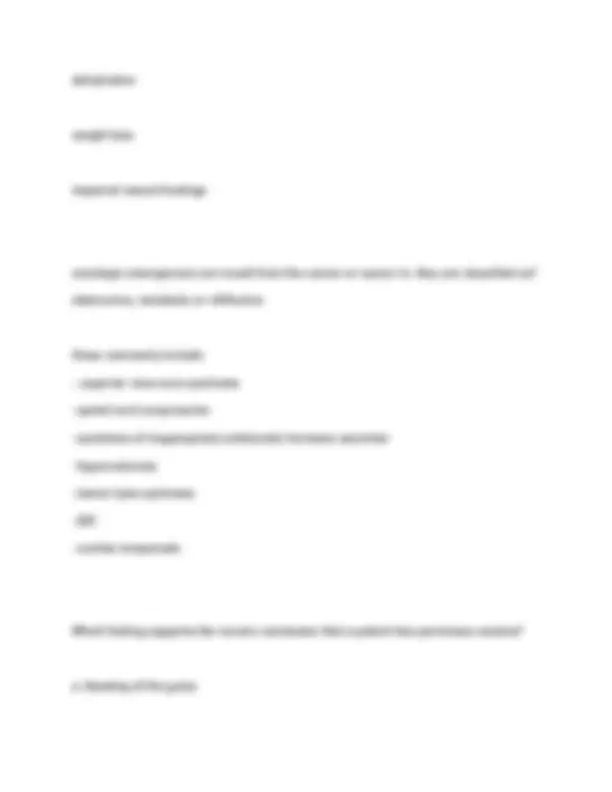
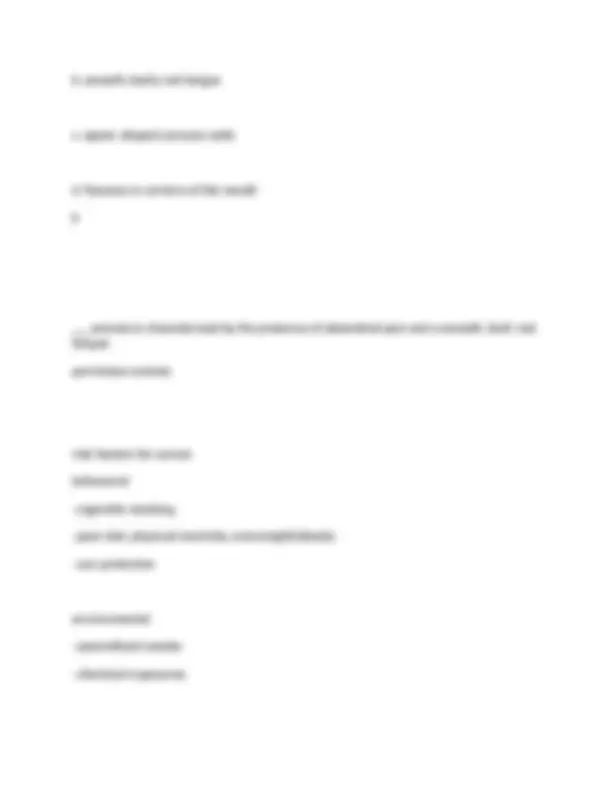
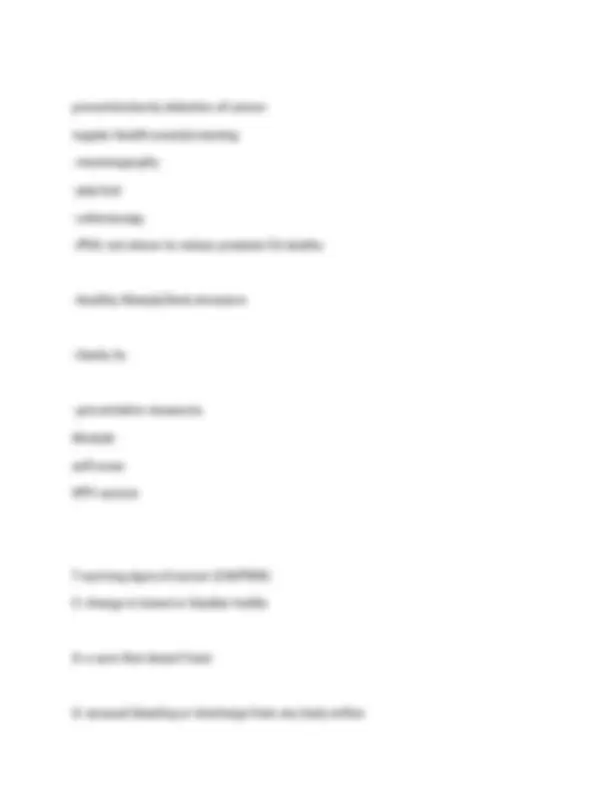
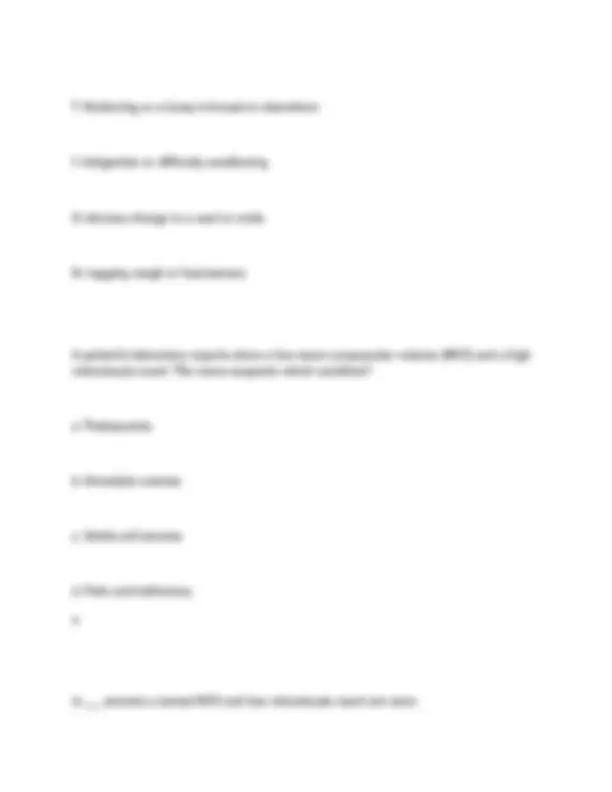
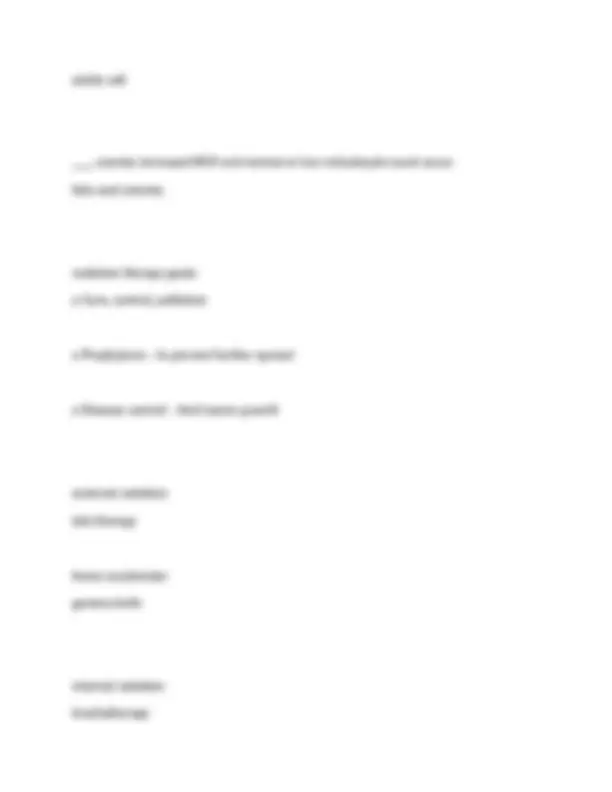
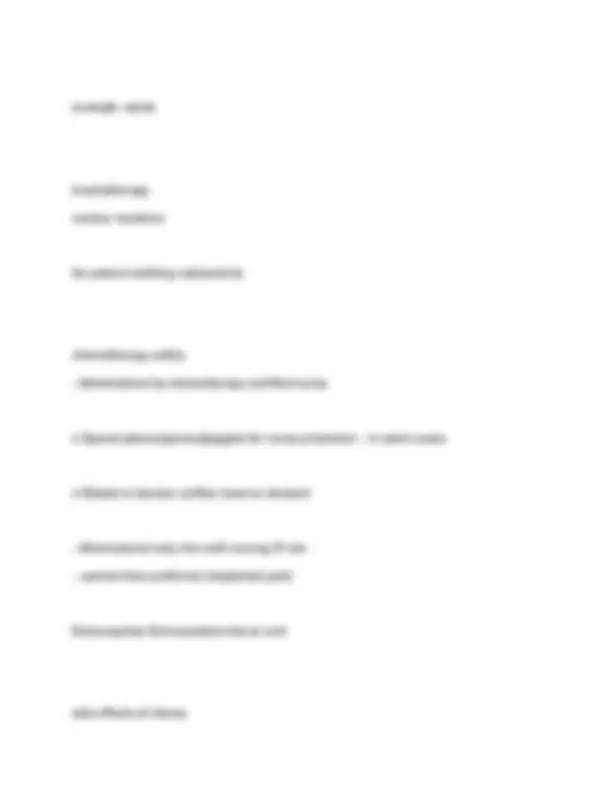
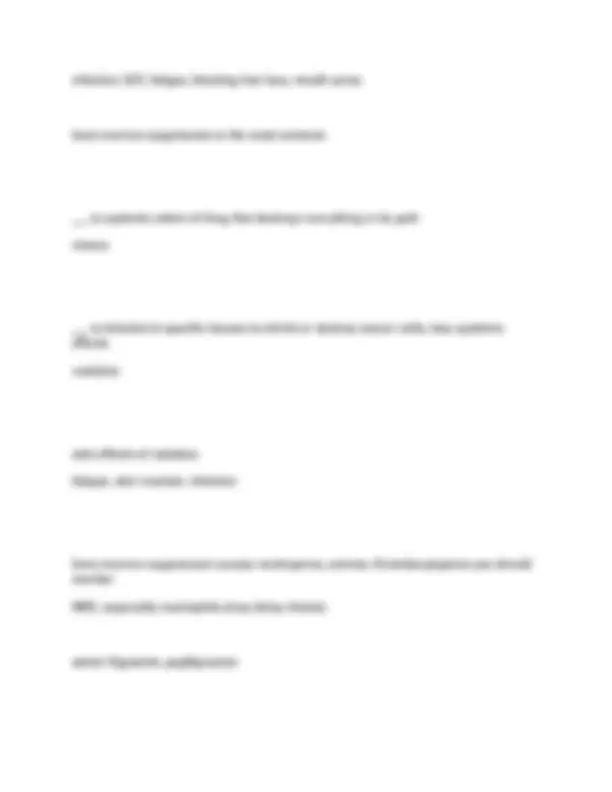
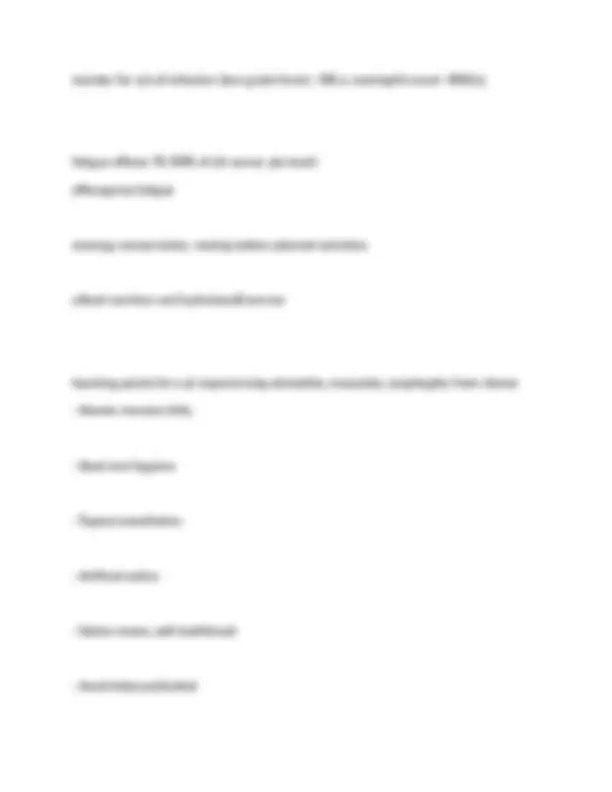
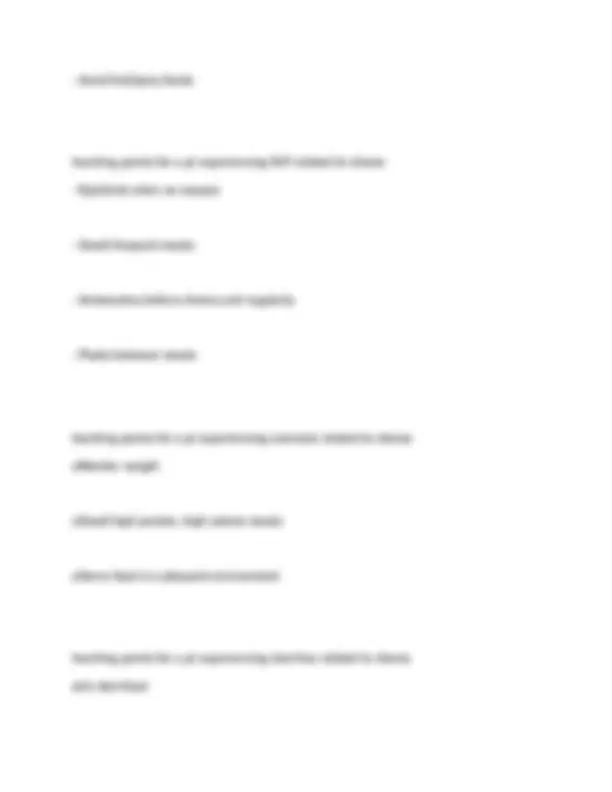
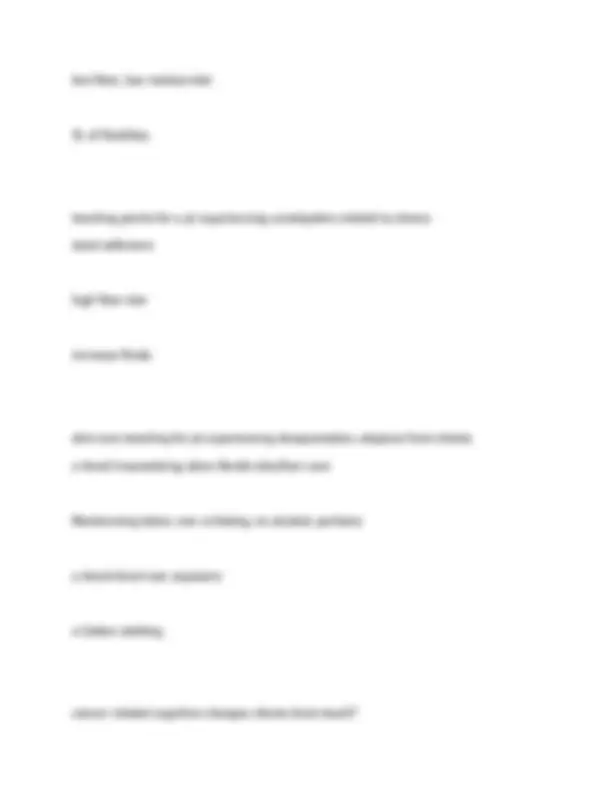

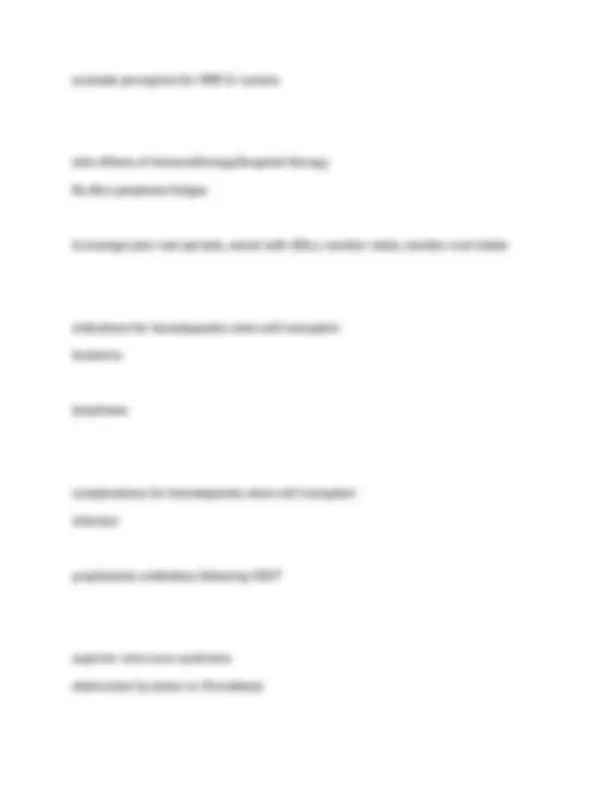

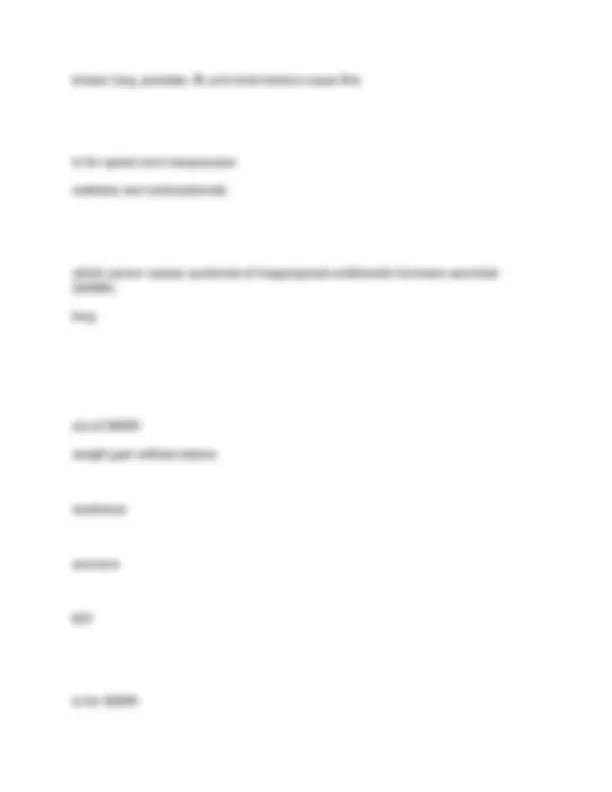

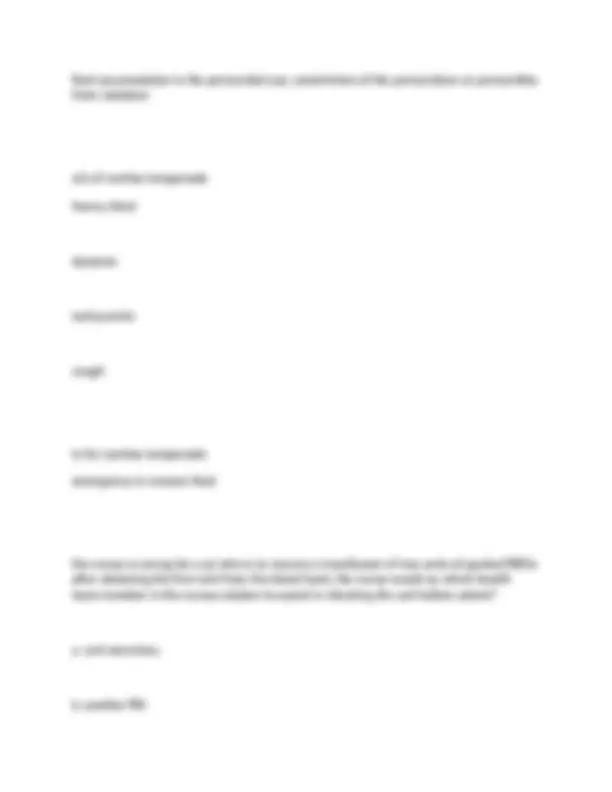
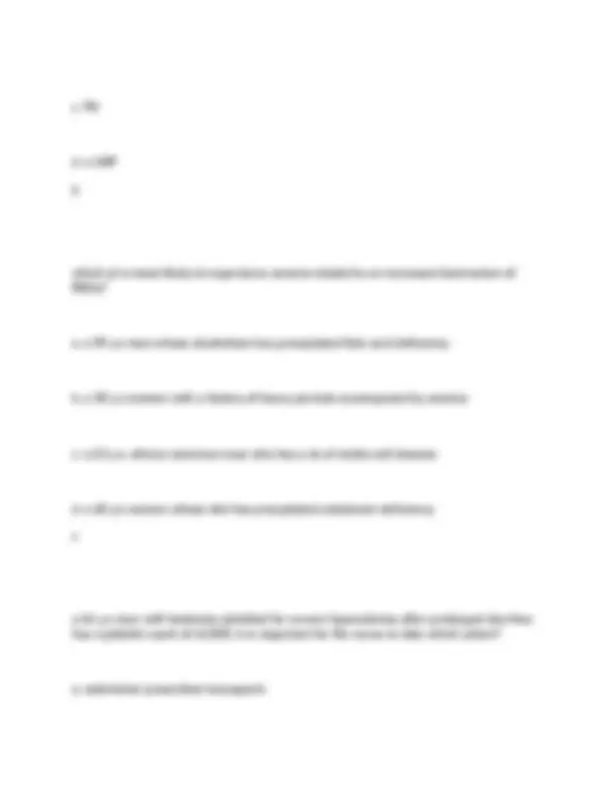
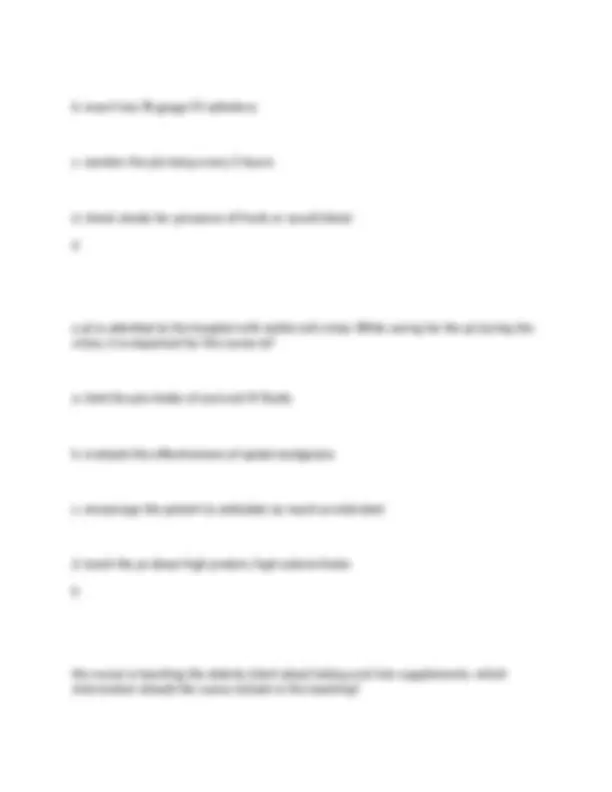
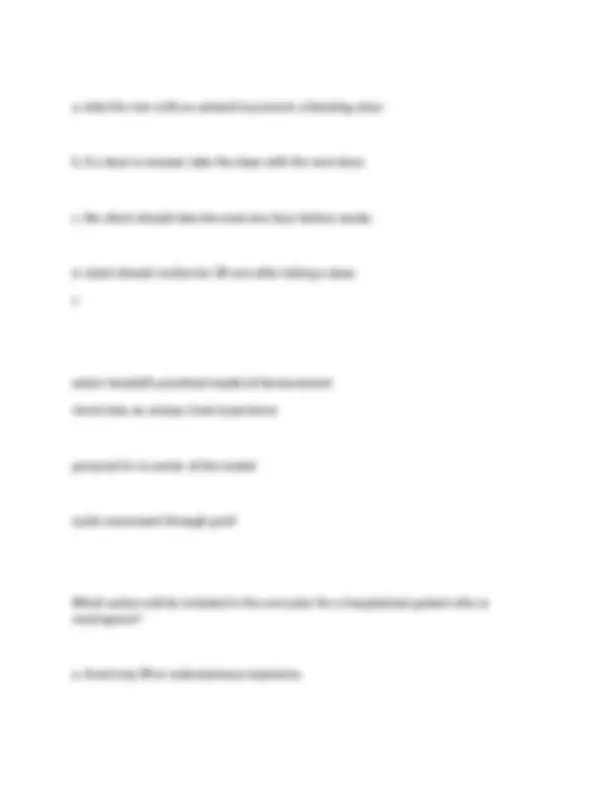
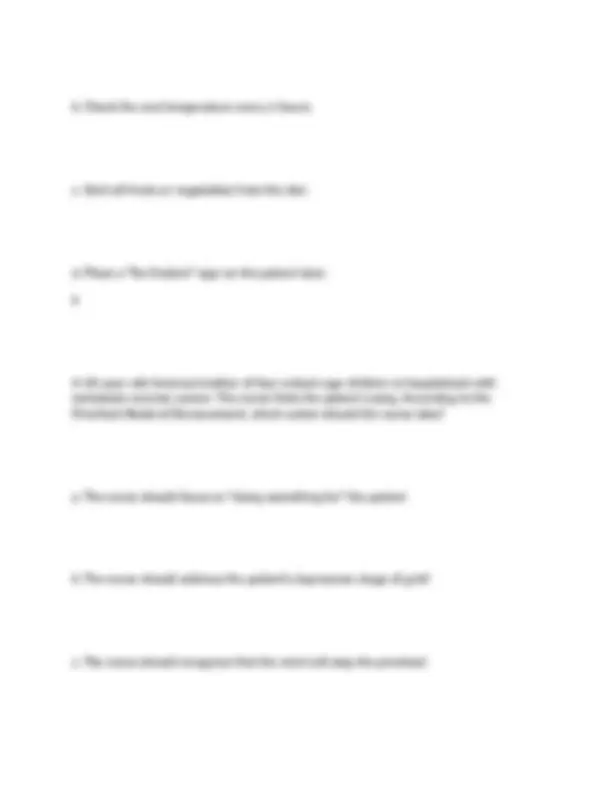
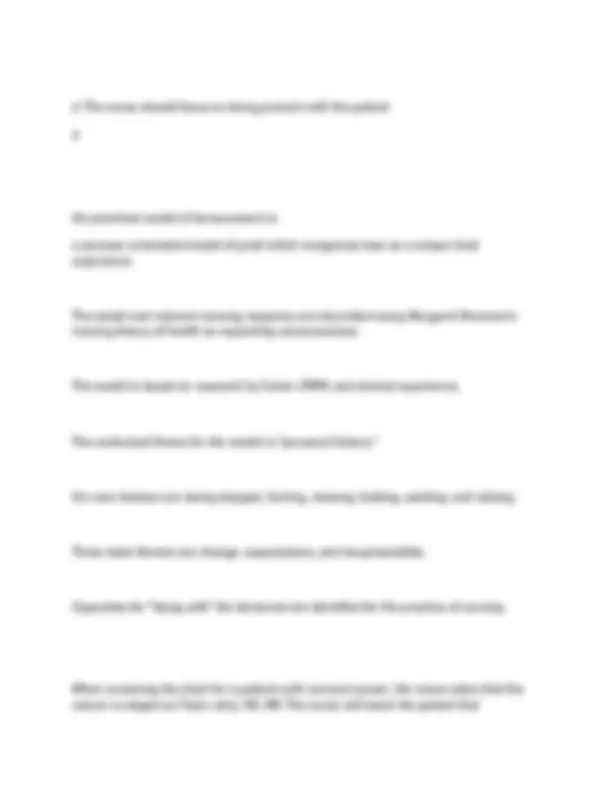
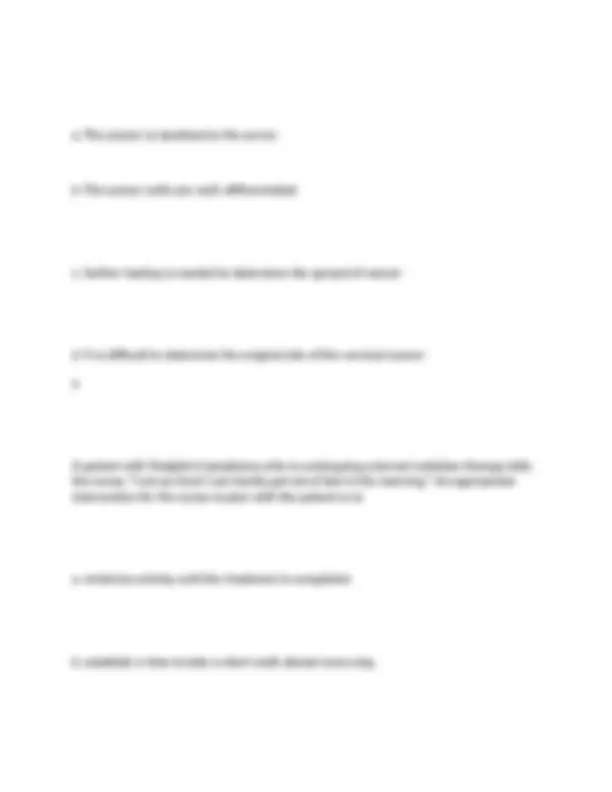
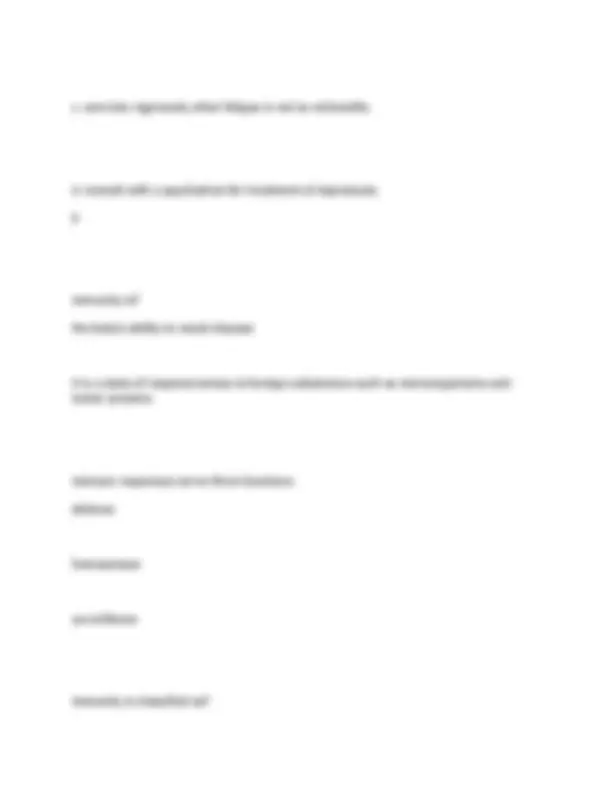
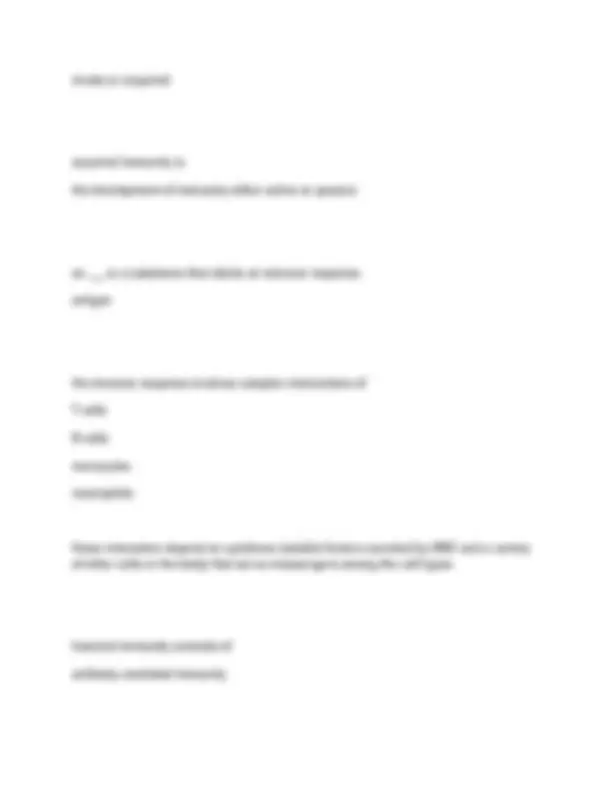
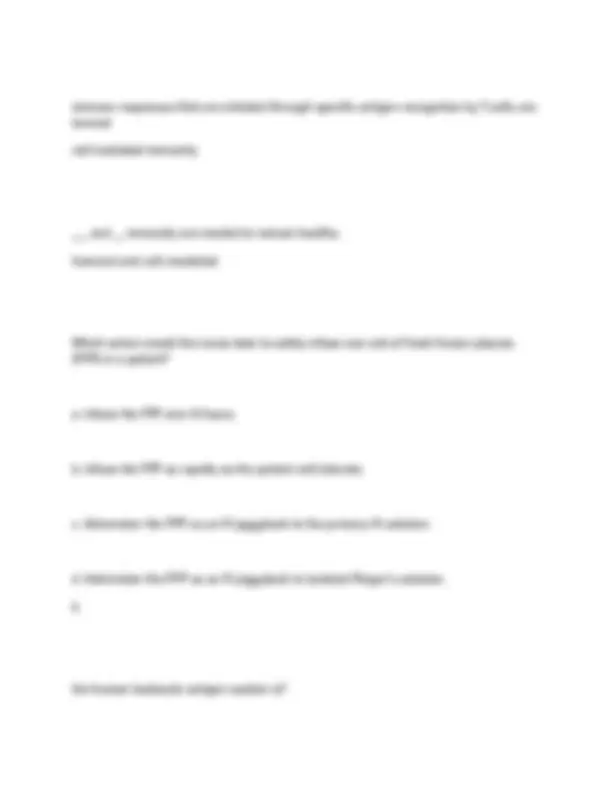

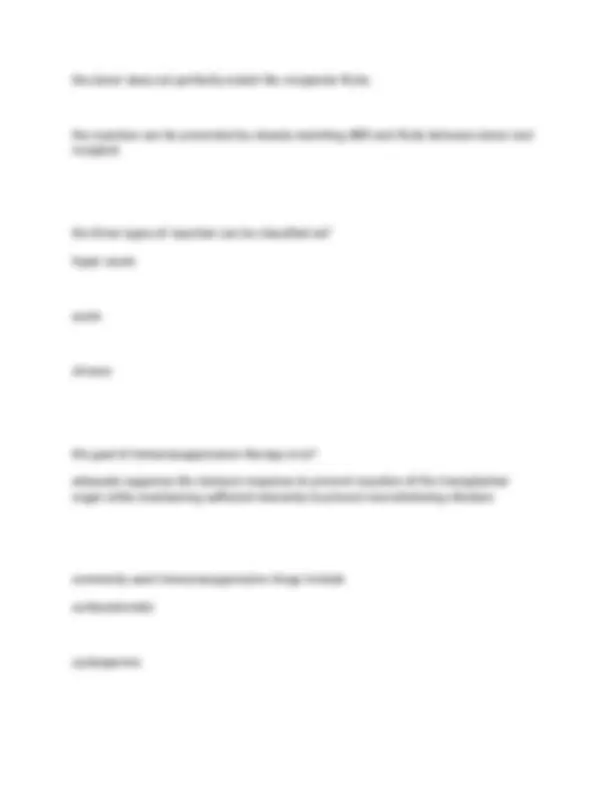
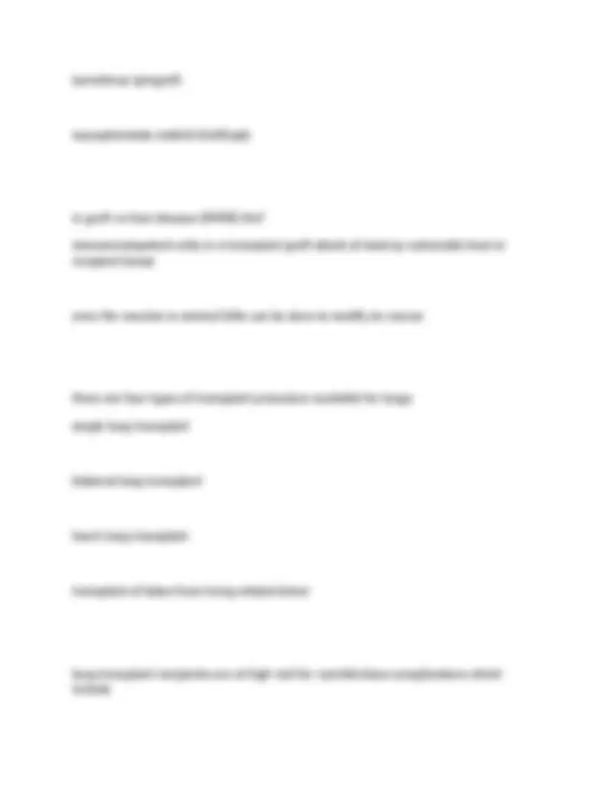
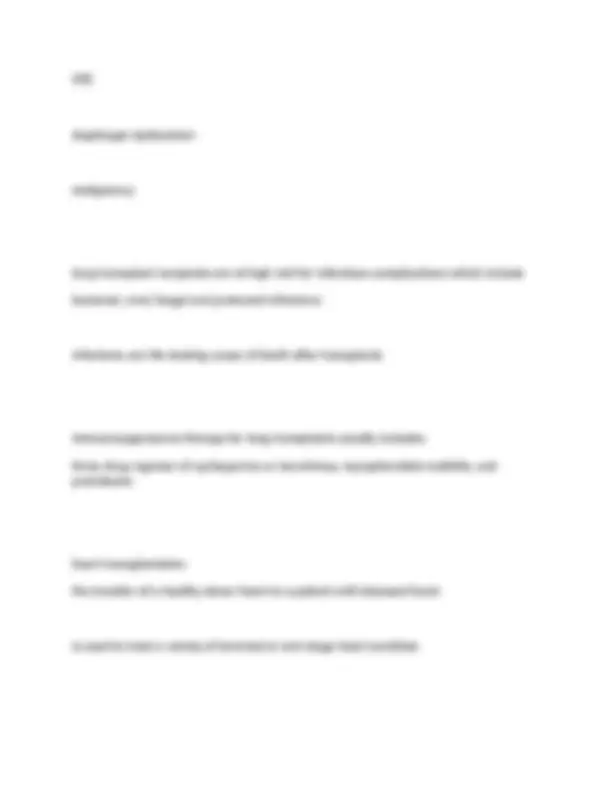
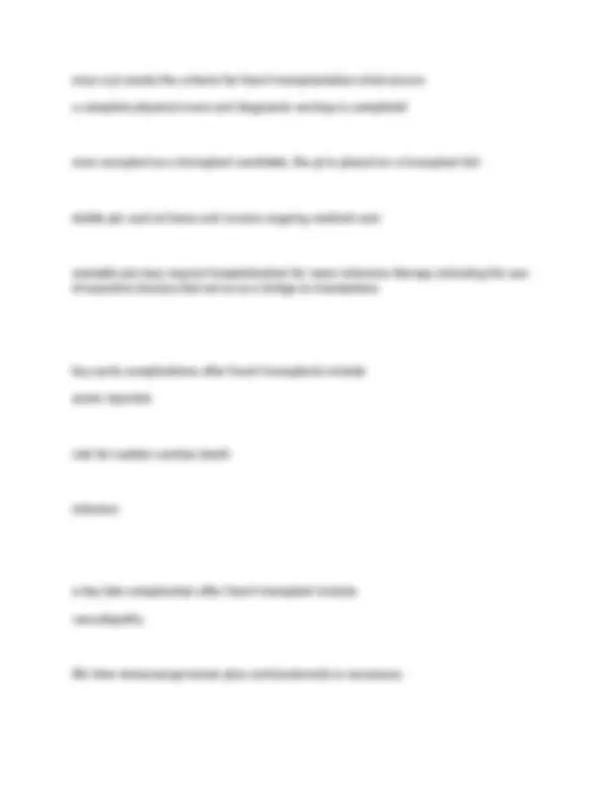
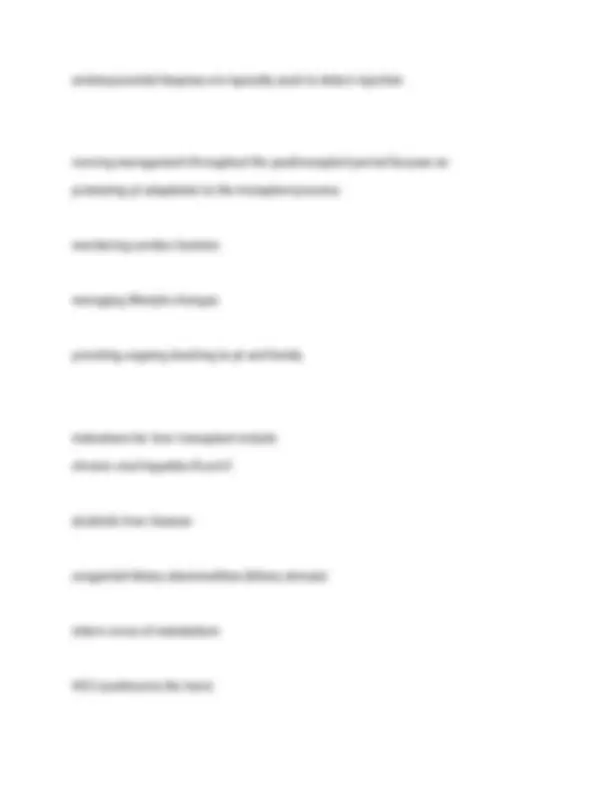
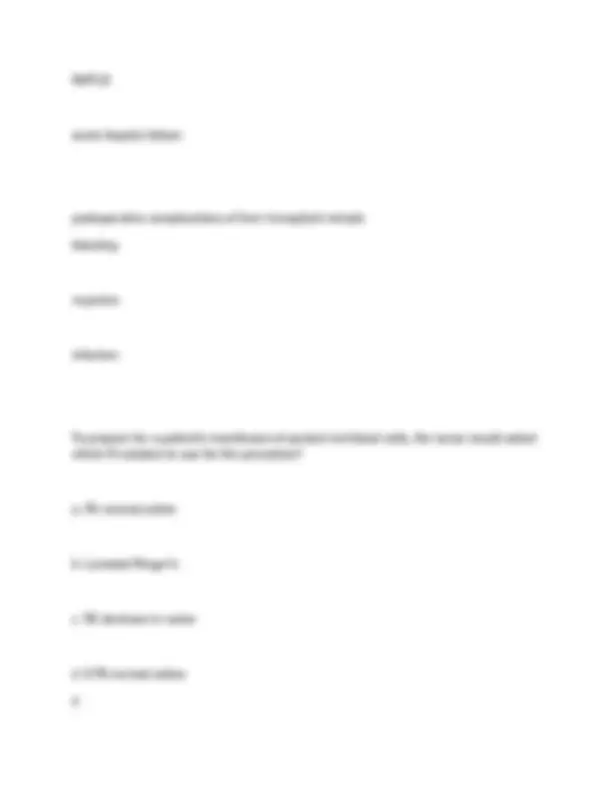
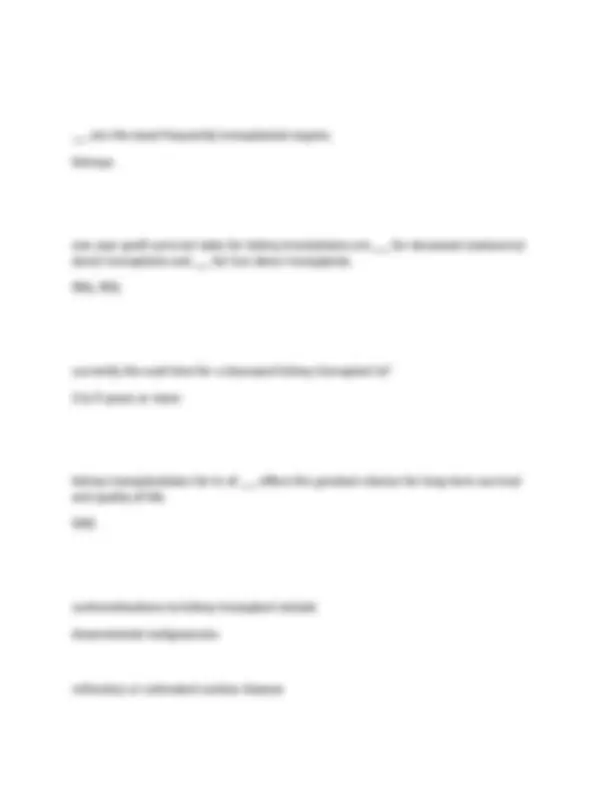
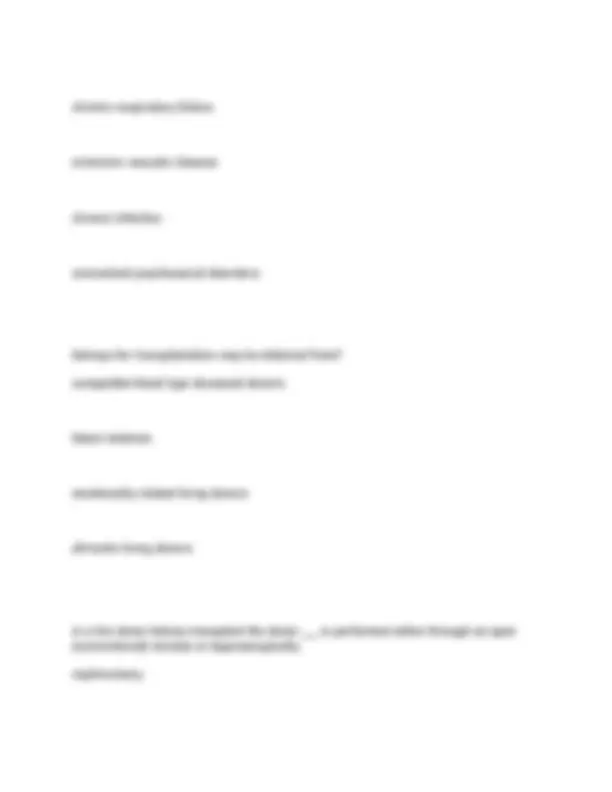
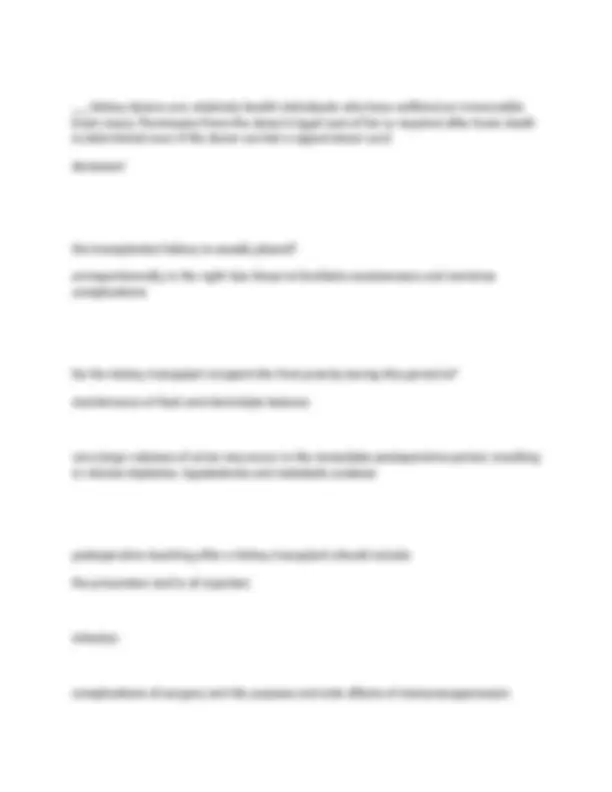
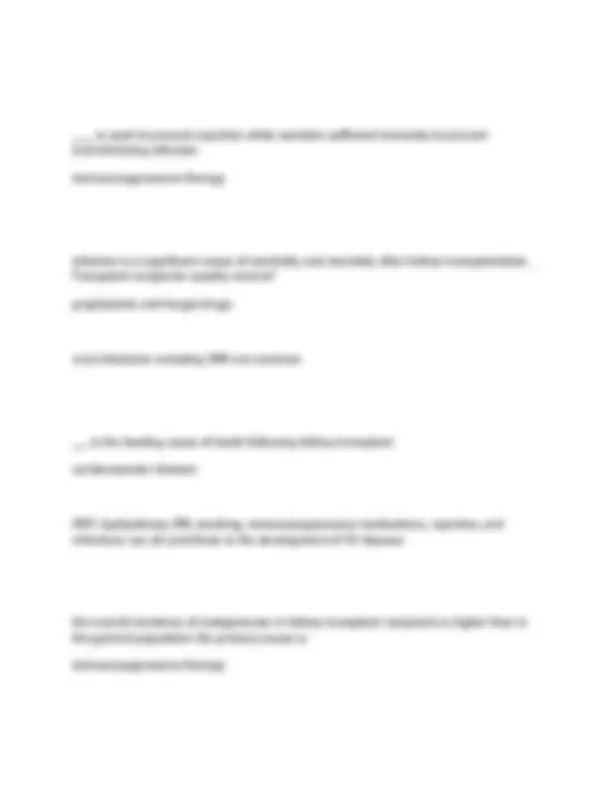
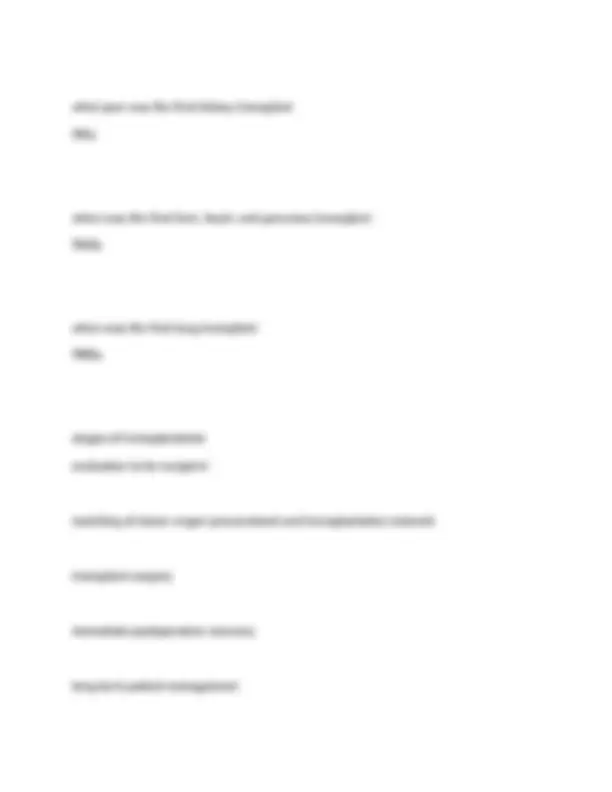
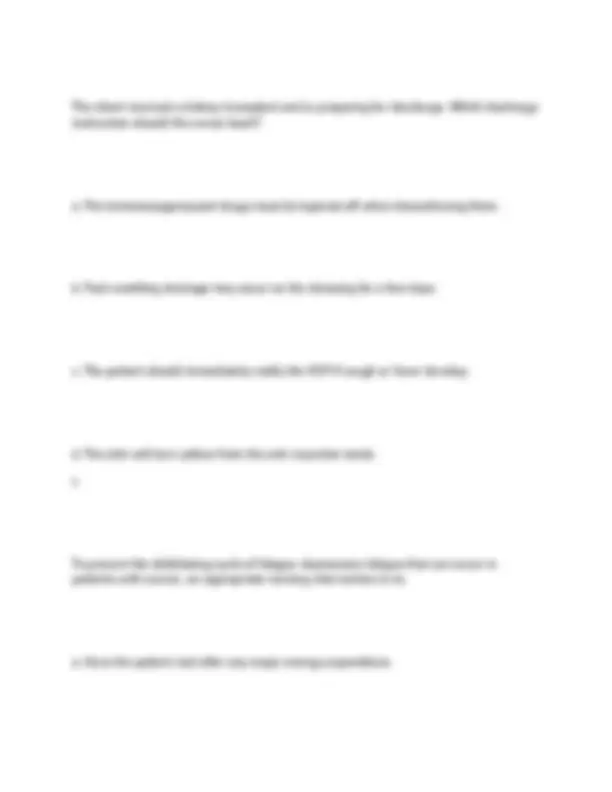
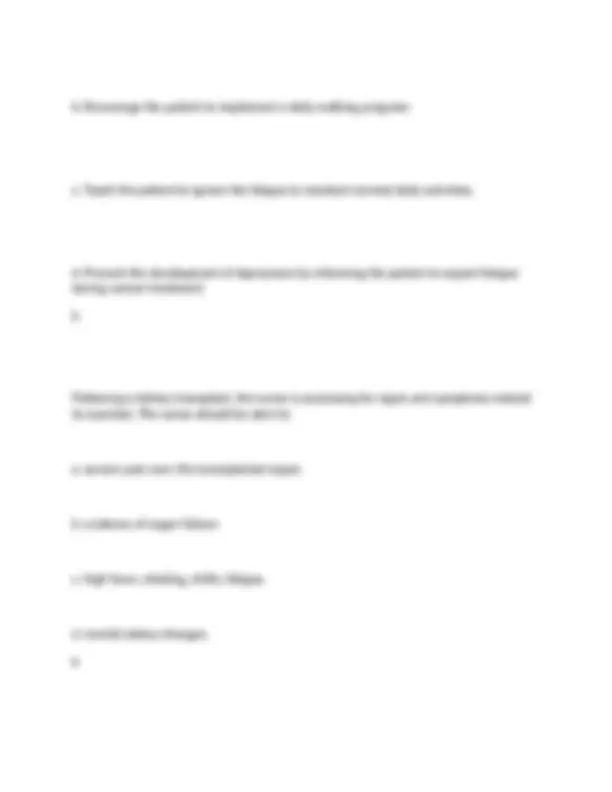


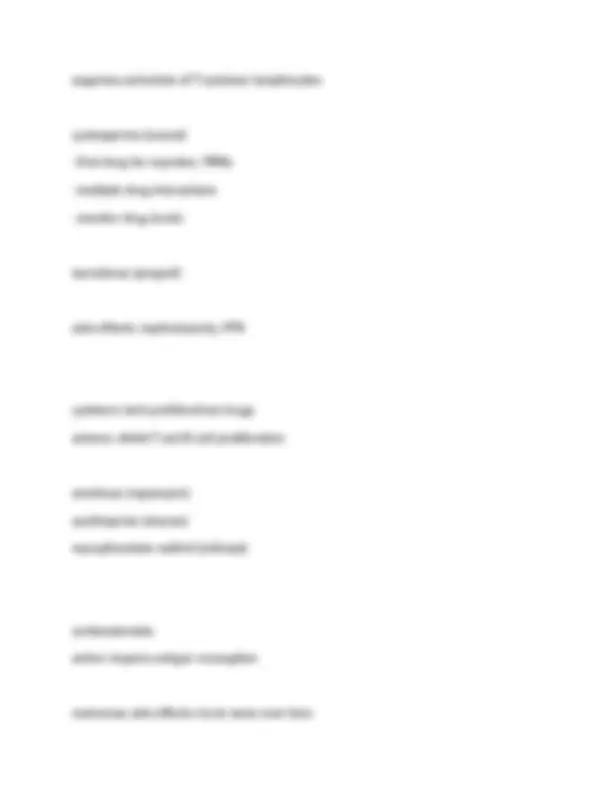
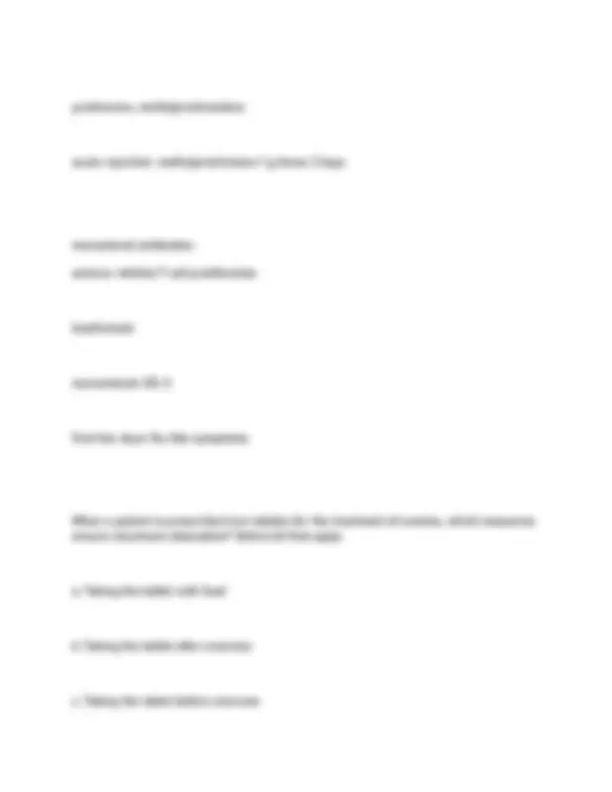
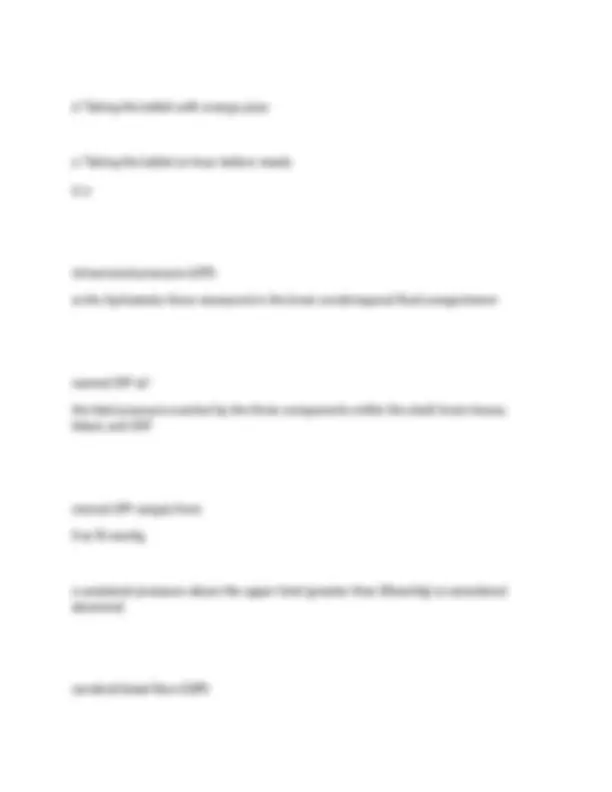

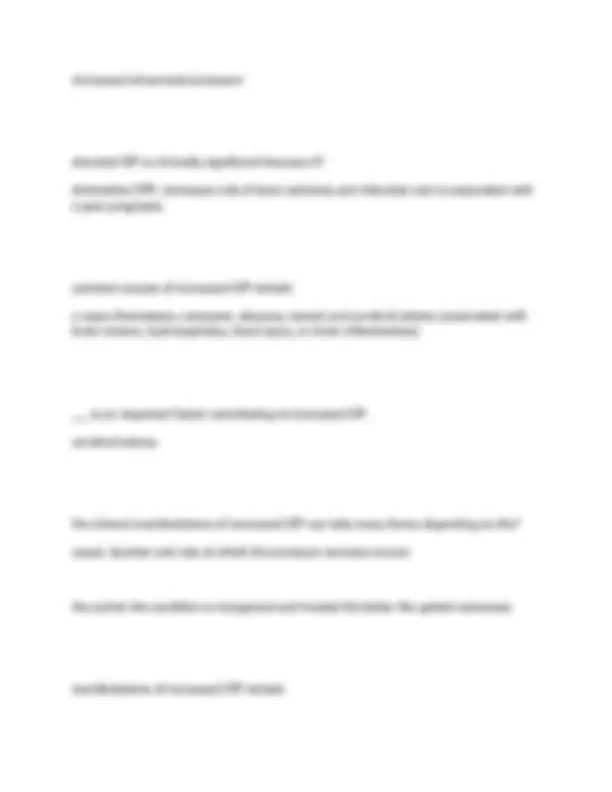
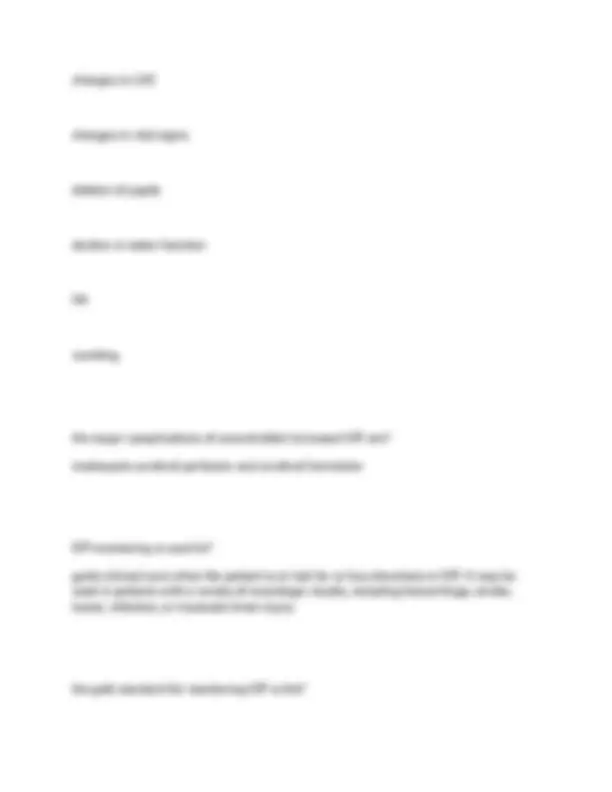
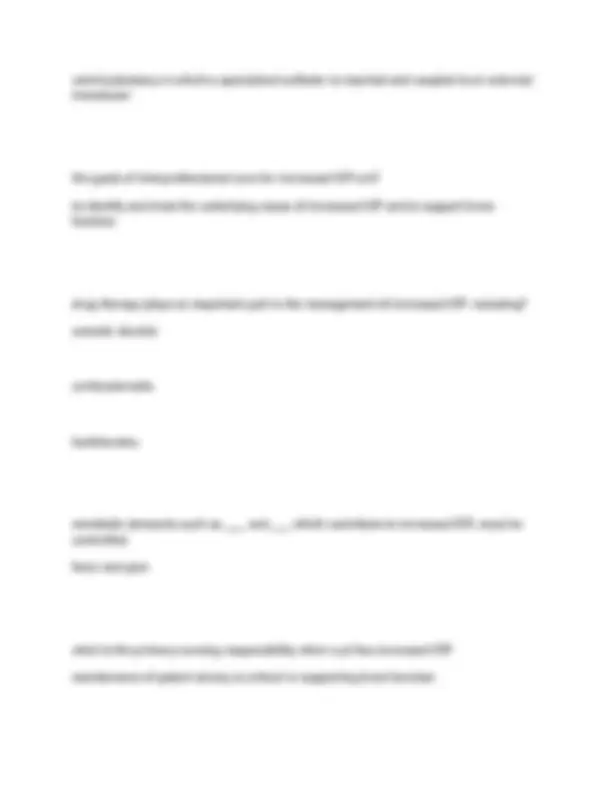
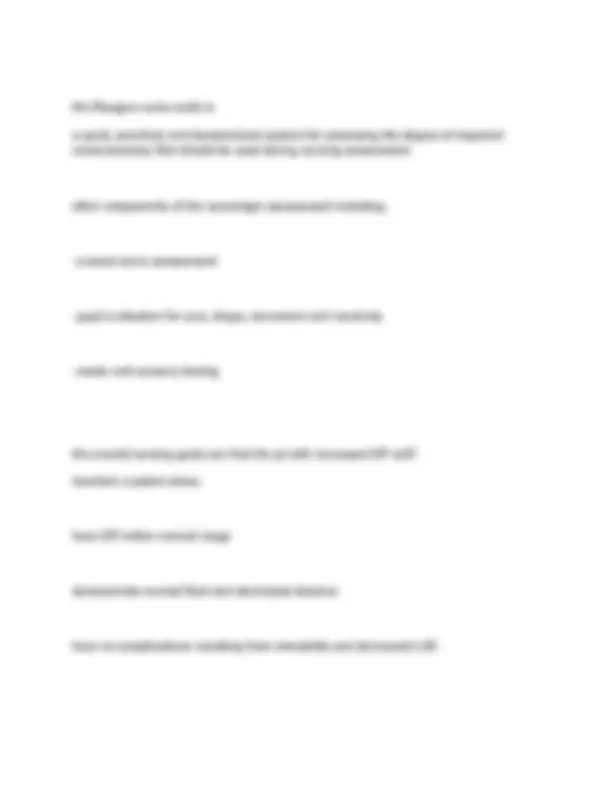
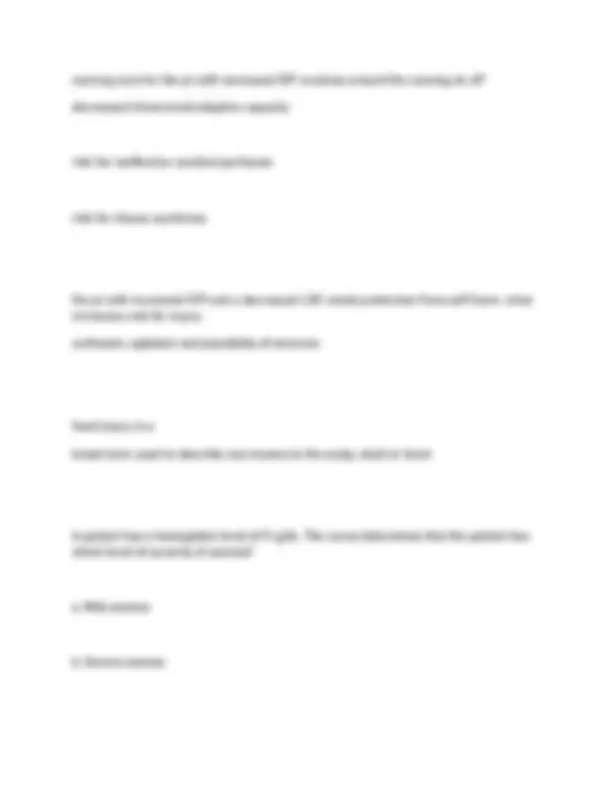
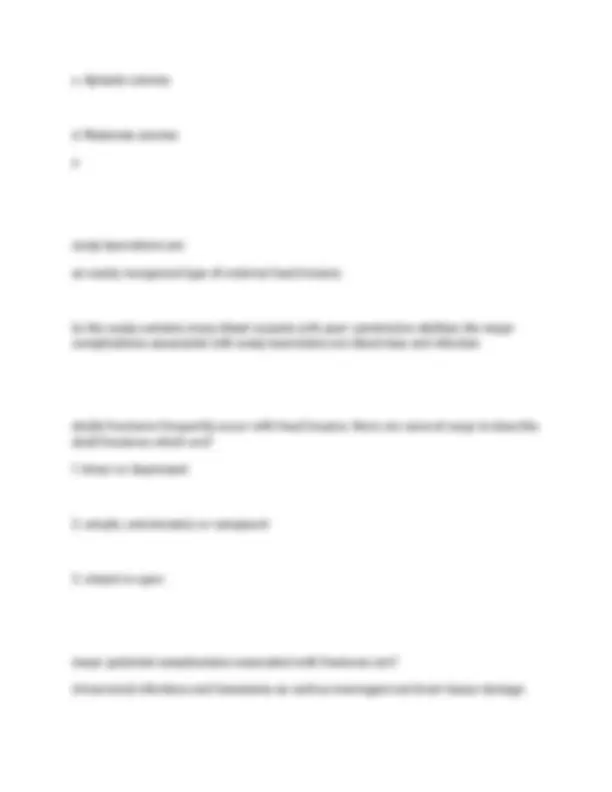


Study with the several resources on Docsity

Earn points by helping other students or get them with a premium plan


Prepare for your exams
Study with the several resources on Docsity

Earn points to download
Earn points by helping other students or get them with a premium plan
Community
Ask the community for help and clear up your study doubts
Discover the best universities in your country according to Docsity users
Free resources
Download our free guides on studying techniques, anxiety management strategies, and thesis advice from Docsity tutors
NURS 6202 Exam 2 2025/2026 Questions with Correct and Detailed Answers Actual Exam (Score A)-Marquette University
Typology: Exams
1 / 224

This page cannot be seen from the preview
Don't miss anything!





























































































a patient comes to the ED by ambulance after a MVA. vitals are temp 99.2, pulse 58, resp 15, BP 168/60, O2 sat 96 on 100% non breather mask. Your next step is? a. document the pt is table and prepare for CT scan b. elevate HOB 90 degrees to maintain ICP c. elevate HOB 30 degrees, start neurons checks every 15 min d. place pt in left lateral side to perform a lumbar puncture c your pt is inpatient for a hypertensive crisis. Recent BP is 168/90. You walk in and your patient start talking to you in gibberish language. You notice the patients right arm is weak. What is your next step? a. call the provider
b. put the pt in a wheelchair and bring down for CT scan c. do a neuro assessment d. document the time d bc if we need to give TPA it can only be given within 4 hours so we need to know the time Your pt is post kidney transplant 20 years ago. He is admitted with a 60lb weight loss in the last six months with anorexia. His labs show pancytopenia. the BP is 178/100. What long term complications do you suspect? Cancer, high BP, diabetes A pt just received a liver transplant. He has a long standing hx of Crohn's disease and Hep B. It is post op day 2, UAP takes a set of VS and reports them back to you: Temp 101, pulse 102, resp 20, BP 132/86, O2 sat 98% You notice the urine output is 30mL over the past 2 hours
blood loss tx for microcytic anemia ferrous sulfate colonoscopy/EGD find the source higher iron in diet (green leafy veggies, eggs, meats) MCV normal, MCH normal, Hgb low, Hct, low what is this? normocytic anemia types of normocytic anemia sickle cell anemia hemolytic anemia (hemolysis: destruction of RBC) normal MCV
average volume of RBC normal MCH 27 - 31 average weight of Hgb per cell normal RBC 4.7-6. normal Hgb/Hct Hgb 12.6-17. Hct 37-51% name five modifiable risk factors for a stroke? diet
a patient is admitted to the ED with signs of a stroke. the stroke team should perform a ___ assessment within 25 minutes and the patient should have a ____ completed and interpreted within 45 minutes. neurologic, CT scan a nurse is preparing to administer a prescribed dose of 20mg of IV potassium to a client. The pharmacy supplies 20meq of potassium in 100mL of normal saline to be administered over 60 minutes. AT what rate does the nurse set the IV pump? 100mL/hr the provider has ordered 1,000mL of lactated ringers to infuse over 8 hours. You have a macro dip tubing with a drop factor of 15 gtt/mL. Calculate how many gtts/min to set as the IV flow rate. 31gtt/min ancef 1mg in 100mL NS to be infused over 30 minutes. You have a macro drip tubing with a drop factor of 10gtt/mL. Calculate how many gtt/min to set as the IV flow rate. 33gtt/min most common type of stroke ischemic
to various types of anemia can be grouped according to either a? morphologic (cellular characteristics) or an etiologic (underlying cause) classification the clinical manifestations of anemia are caused by? the body's response to tissue hypoxia ___ levels are often used to determine the severity of anemia. hemoglobin what are some interventions for anemia? blood or blood product transfusions drug therapy volume replacement oxygen therapy dietary modifications
main goal of inter professional care of iron deficiency anemia is? treat the underlying disease that is causing reduce intake (malnutrition, alcoholism) or absorption of iron megaloblastic anemia are a group fo disorders caused by impaired deoxyribonucleic acid synthesis and characterized by the presence of large RBCs macrocytic (large) RBCs are easily destroyed because they? have fragile cell membranes two common forms of megaloblastic anemia are? cobalamin deficiency folic acid deficiency cobalamin (vitamin B12) deficiency is? most commonly caused by pernicious anemia which results in poor cobalamin absorption through the GI tract
what is the treatment of choice for cobalamin deficiency? parenteral or intranasal administration of cobalamin folic acid (folate) deficiency can lead to? megaloblastic anemia folic acid is required for DNA synthesis leading to RBC formation and maturation how is folic acid deficiency treated? replacement therapy sickle cell disease is? a group of inherited, autosomal recessive disorders characterized by the presence of an abnormal form of Hgb in the erythrocyte the major pathophysiologic event of sickle cell disease is? the sickling of RBCs
platelet disorders can be inherited, but the vast majority are acquired. The causes of acquired disorders include? autoimmune disease increased platelet consumption splenomegaly marrow suppression bone marrow failure most common acquired thrombocytopenia is a? syndrome of abnormal destruction and reduced production of circulating platelets termed immune thrombocytopenic purpura (ITP) multiple therapies are used to manage the pt with ITP such as? corticosteroids splenectomy immunosuppressants
thrombopoietin receptor agonists one of the risks associated with the broad and increasing use of heparin is the development of a life threatening condition called? heparin induced thrombocytopenia (HIT) heparin must be discounted when HIT is first recognized which is usually if? the patients platelet count has fallen 50% or more form its baseline or if a thrombus forms while the patient is on heparin therapy the overall goals are that the pt with thrombocytopenia will?
the general term used to describe a group of malignant disorders affecting the blood and blood forming tissues of the bone marrow, lymph system and spleen classification of leukemia can be done based on? acute vs chronic and on the type of WBC involved whether it is myelogenous origin or lymphocytic origin the onset of acute myelogenous leukemia (AML) is often abrupt and dramatic. AML is characterized by? uncontrolled proliferation of myeloblasts the precursors of granulocytes _____ is the most common type of leukemia in children. acute lymphocytic leukemia (ALL) ______ accounts for about 80% of the acute leukemias in adults. Its onset is abrupt and dramatic. A patient may have serious infection and abnormal bleeding from the onset of the disease. acute myelocytic leukemia (AML)
chronic myelogenous leukemia (CML) is caused by? excessive development of mature neoplastic granulocytes in the bone marrow which move into the peripheral blood in massive numbers and ultimately infiltrate the liver and spleen the natural history of CML is a? chronic stable phase, followed by the development of more acute, aggressive phase referred to as the blastic phase chronic lymphocytic leukemia (CLL) is characterized by? the production and accumulation of functionally inactive but long lived, small mature appearing lymphocytes the lymphocytes infiltrate the bone marrow, spleen, and liver and lymph node enlargement is present throughout the body Which role does folic acid play in erythropoiesis? a. aids in absorption of iron b. promotes RBC maturation c. promotes Hgb synthesis
in some cases, such as asymptomatic pts with CLL, watchful waiting with active supportive care may be appropriate with anemia what are cardiopulmonary changes that occur? heart tries to compensate low blood viscosity leads to murmurs what are some gerontologic considerations for anemia? common in order adults s/s unrecognized or mistaken for normal aging changes iron deficiency anemia labs? decreased Hgb, Hct, MCV, serum iron normal B12 and folate levels iron supplements teaching points
best absorbed before meals in acidic environment liquid iron stains teeth the patient can dilute it or use a straw iron supplement side effects to teach pts heartburn constipation diarrhea indications for parenteral iron (IV or IM) malabsorption or oral iron intolerance higher dose poor patient compliance with oral **IM may stain skin common causes of cobalamin deficiency